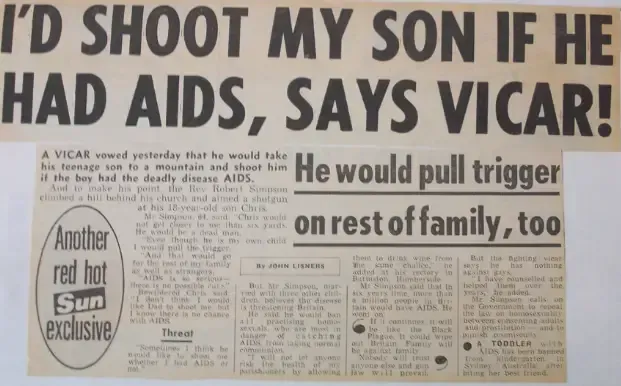
The History of HIV/AIDS 1990-1999
Click here to see years 1981-1989
Author & columnist, featured on HBO, NPR, and in The New York Times
Click here to see 1981 to 1989
Click here to see 2010 - Present
1990
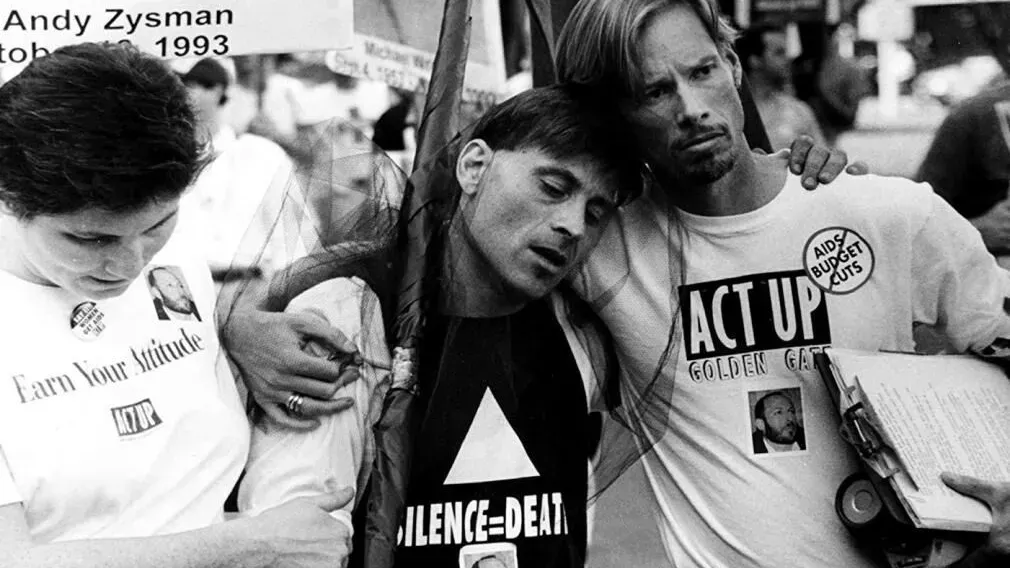
[Most Significant Events/Discoveries]
The Emergence of AZT Resistance
In 1990, a startling revelation emerged in the battle against HIV/AIDS. Researchers found that the virus could develop resistance to AZT, the only approved treatment at the time. Dr. Douglas D. Richman of the University of California, San Diego, said, "We were naive to think that resistance wouldn't develop to the first anti-HIV drug." This underscored the urgency to develop new treatments to stay ahead of the ever-evolving virus.
CDC's Revised Case Definition
In 1990, the Centers for Disease Control and Prevention (CDC) revised their case definition of AIDS, expanding the list of diseases associated with the syndrome. This change led to a significant increase in reported AIDS cases, but also raised concerns about overdiagnosis. Dr. James W. Curran, director of the CDC's AIDS division, remarked, "We need to balance the benefits of detecting and treating people earlier with the possible problems of overdiagnosis."
The Launch of the National Commission on AIDS
In an effort to address the escalating crisis, the National Commission on AIDS was established in 1990. The commission, composed of experts and advocates, was tasked with advising Congress and the White House on policy and research. Some critics, however, questioned the commission's effectiveness. Mathilde Krim, a prominent AIDS activist, expressed her doubts: "Unless the government backs up the commission with money and action, it will be just another empty gesture."
Promising Results from DDI Trials
As the limitations of AZT became apparent, researchers were eager to explore alternative treatments. In 1990, a new drug called DDI showed promising results in clinical trials. Dr. Margaret A. Fischl, a leading AIDS researcher, stated, "DDI appears to be less toxic and potentially more potent than AZT." The discovery sparked hope that more effective therapies might be on the horizon.
[Medical Consensus vs Dissidents]
The AZT Debate
In 1990, the medical community was divided over the use of AZT. While many experts praised the drug as a life-extending treatment, others argued it was too toxic and questioned its efficacy. Dr. Joseph Sonnabend, a prominent AIDS clinician, argued, "AZT may be doing more harm than good in some patients." This clash of opinions left patients and their families grappling with difficult decisions about treatment options.
The Gallo-Montagnier Controversy
A dispute between Dr. Robert Gallo of the United States and Dr. Luc Montagnier of France persisted in 1990, as both scientists claimed credit for the discovery of HIV. This disagreement not only fueled tensions between the two nations but also created divisions within the scientific community. Dr. Jay A. Levy, a leading AIDS researcher, lamented the situation, saying, "This kind of bickering is detrimental to the scientific process and to the fight against AIDS."
HIV and Kaposi's Sarcoma
In 1990, the link between HIV and Kaposi's sarcoma (KS), a common AIDS-related cancer, remained a topic of debate. Some researchers argued that the virus directly caused KS, while others believed that a separate, unidentified agent was responsible. Dr. Alvin E. Friedman-Kien, a dermatologist at New York University, explained, "The relationship between HIV and KS is still not completely understood." This uncertainty added to the overall confusion surrounding HIV/AIDS.
The HIV-Causation Controversy
A minority of dissident scientists in 1990 challenged the widely accepted belief that HIV caused AIDS. Dr. Peter Duesberg, a molecular biologist at the University of California, Berkeley, was the most prominent voice among these dissidents. He argued that HIV was a harmless passenger virus, and that the real cause of AIDS was recreational drug use and other factors. Dr. Duesberg's views were highly controversial, and most experts disagreed with his hypothesis.
Dr. Anthony Fauci, the director of the National Institute of Allergy and Infectious Diseases, countered, "The overwhelming body of evidence supports the fact that HIV is the causative agent of AIDS." Nonetheless, the existence of dissenting opinions added another layer of complexity to the HIV/AIDS conversation in 1990.
Alternative Therapies and Treatments
As the debate over AZT and other mainstream treatments continued, some patients and practitioners turned to alternative therapies to combat HIV/AIDS. Treatments such as hyperthermia, ozone therapy, and herbal remedies gained popularity in 1990, but their effectiveness was often unproven and controversial. Dr. Paul Volberding, an AIDS specialist at San Francisco General Hospital, cautioned, "While some alternative therapies may have potential, many are untested and could be dangerous." This underscored the need for rigorous scientific evaluation of all proposed treatments.
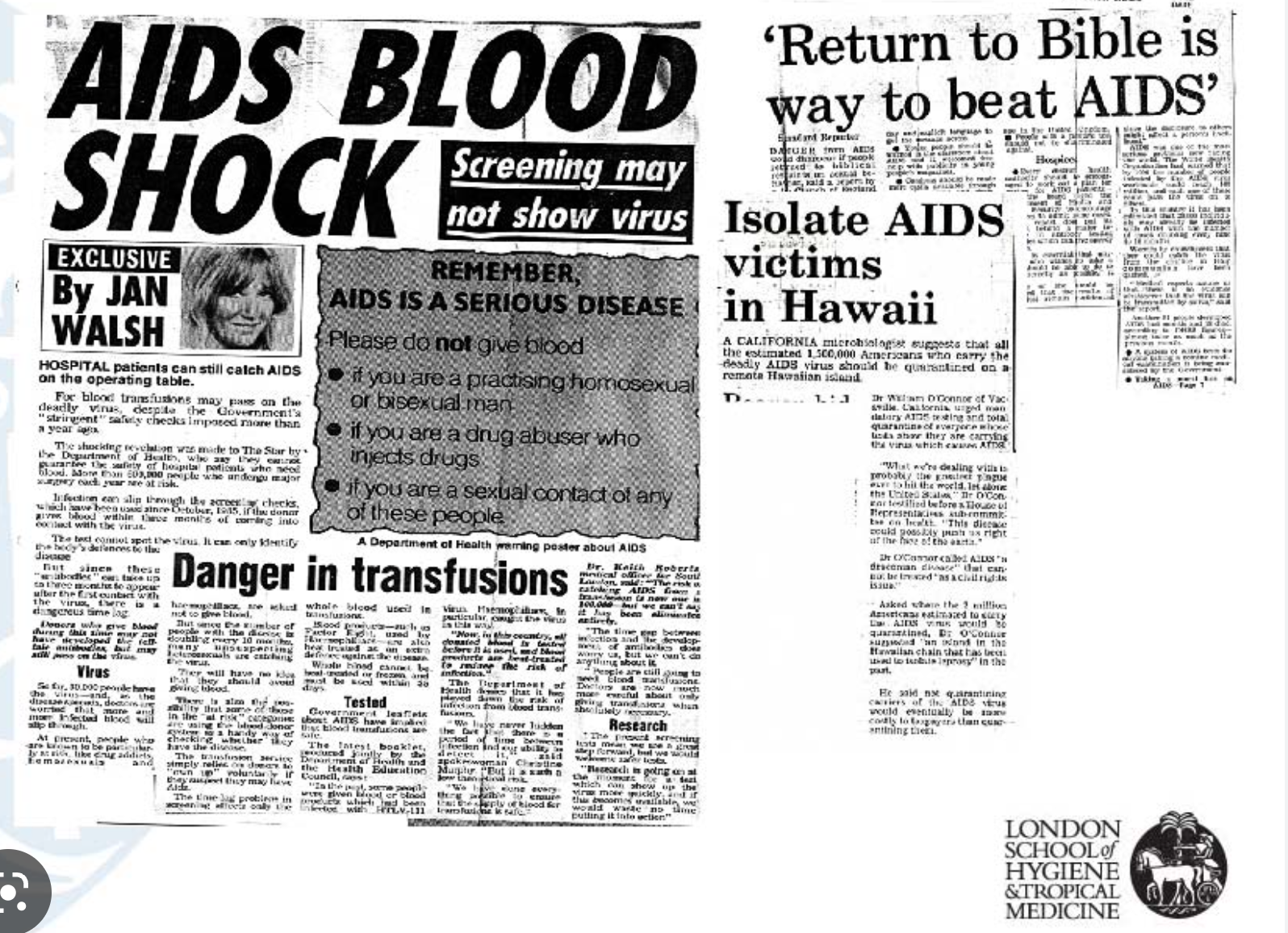
[How The Mainstream Media Covered The Story]
Mainstream media outlets in 1990 covered the HIV/AIDS crisis with a mixture of sensationalism and genuine concern. Fear and misinformation sometimes influenced headlines, which led to both public awareness and panic.
Sample Headlines
- "AIDS Fears Rise as CDC Expands Case Definition" (Los Angeles Times)
- "AIDS: A Growing Crisis in America's Heartland" (Newsweek)
- "The AZT Debate: Miracle Drug or Dangerous Experiment?" (The Washington Post)
- "Gallo-Montagnier Feud Hampers AIDS Research" (The New York Times)
- "The Search for a Cure: Inside the World of AIDS Research" (TIME)
Many criticized the mainstream media for focusing on controversy and sensationalism, often at the expense of accurate and balanced reporting. Some accused the press of perpetuating stigma and fear by using loaded language and emphasizing the most alarming aspects of the epidemic. "The media has a responsibility to educate and inform the public, but too often, they've chosen to sell papers by sensationalizing the crisis," said an anonymous source from the AIDS advocacy community.
Others, however, praised the media for bringing attention to the issue and for humanizing the individuals affected by HIV/AIDS. Journalist Randy Shilts, author of "And the Band Played On," argued, "While the media's coverage of AIDS has been far from perfect, it has helped to break down barriers and create a dialogue about the disease."
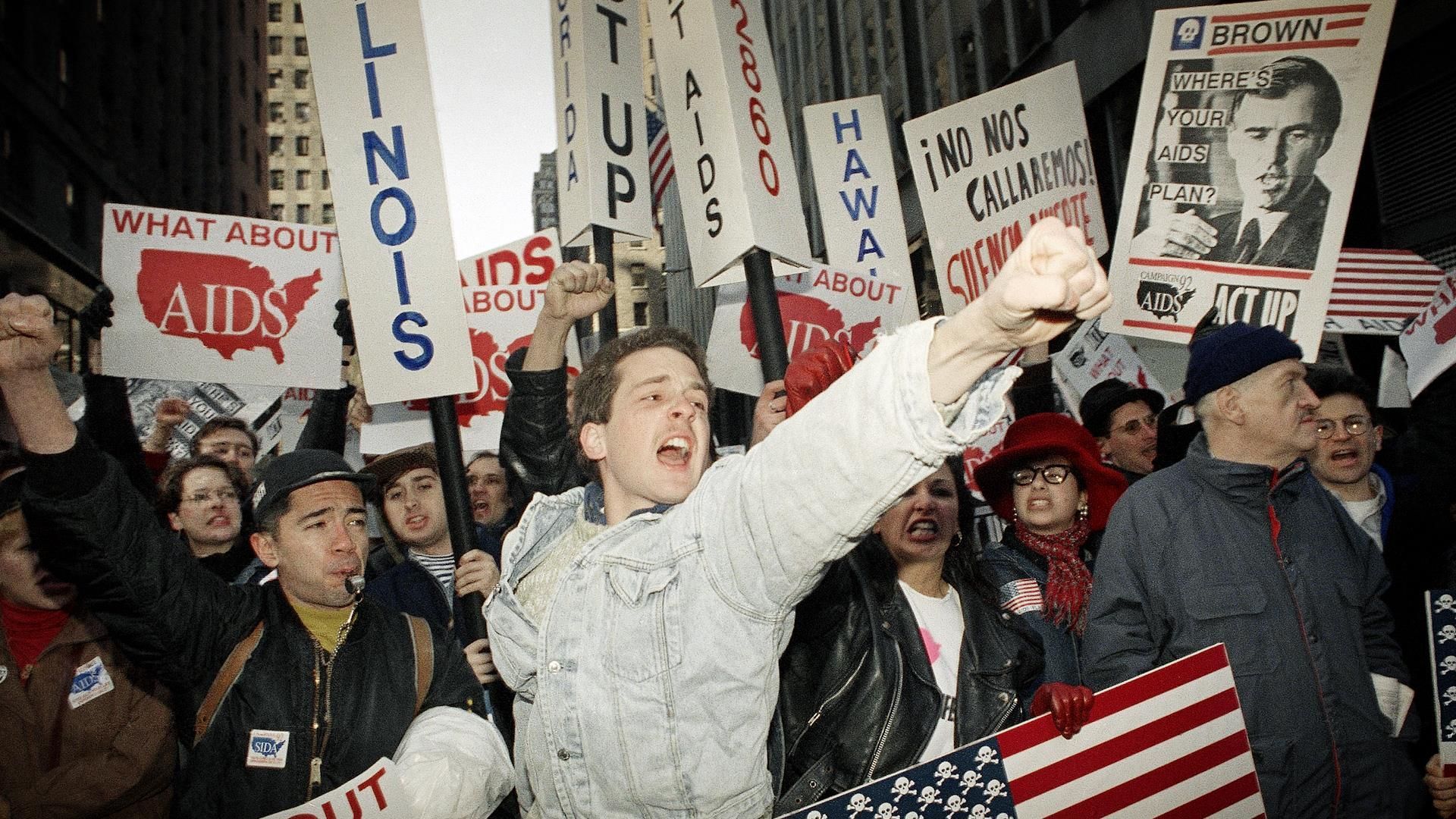
[How The Gay Media Covered The Story]
National gay media outlets like The Advocate and local gay newspapers and magazines played a crucial role in the HIV/AIDS conversation in 1990. Their coverage often differed from mainstream media in terms of focus, tone, and depth.
Sample Headlines
- "AZT: A Lifesaver or a Death Sentence?" (The Advocate)
- "Living with HIV: Stories from the Frontlines" (Bay Area Reporter)
- "The Silent Crisis: Lesbians and AIDS" (OutWeek)
- "The Politics of Plague: How Governments Have Failed Us" (New York Native)
- "The Fight for Better Care: Inside the ACT UP Protests" (Philadelphia Gay News)
Gay media outlets were often more critical of the government's response to the epidemic and provided a platform for activists and community leaders to voice their concerns. They also focused on the personal stories of those living with HIV/AIDS, humanizing the crisis in a way that mainstream media sometimes failed to do.
Some criticized gay media for being too insular and not engaging with broader audiences. A reader of The Advocate wrote, "While it's important for our community to have a voice, we also need to make sure that our message is reaching those who aren't already aware of the issues we face."
However, others praised gay media for their commitment to accurate reporting and for providing vital information to a community disproportionately affected by the epidemic. Dr. Michael Gottlieb, an early AIDS researcher, said, "The gay press has been a lifeline for people living with HIV/AIDS, providing essential information and support during a time of great uncertainty."
[How The U.S. Government Responded]
In 1990, government officials at institutions like the NIH and FDA found themselves at the center of the HIV/AIDS crisis, as they grappled with the need for research, funding, and expedited drug approval processes. Their actions and statements during this time were subject to intense scrutiny and debate.
NIH's Struggle for Funding and Research Priorities
The National Institutes of Health (NIH) was under immense pressure in 1990 to allocate sufficient resources to HIV/AIDS research. Dr. Anthony Fauci, Director of the National Institute of Allergy and Infectious Diseases (NIAID), acknowledged this challenge in a 1990 interview: "The scientific community is working diligently to find answers, but the scope of the problem requires additional funding and resources." Critics argued that the NIH was not doing enough to prioritize HIV/AIDS research, while others expressed concern that funding for other diseases was being overshadowed.
FDA and the Expedited Approval Process
The Food and Drug Administration (FDA) faced growing demand to expedite the approval process for new HIV/AIDS medications. Dr. David Kessler, Commissioner of the FDA at the time, admitted the urgency: "We must strike a balance between ensuring the safety and efficacy of new drugs and getting them to patients as quickly as possible." Despite efforts to streamline drug approvals, critics accused the FDA of moving too slowly, endangering the lives of those living with HIV/AIDS.
Controversial HIV Testing Recommendations
In 1990, the Centers for Disease Control (CDC) proposed new guidelines recommending routine HIV testing for all pregnant women, sparking heated debate. Dr. James Mason, Assistant Secretary for Health, defended the proposal, saying, "We need to identify HIV-positive women early in their pregnancies to prevent transmission to their unborn children." However, opponents argued that mandatory testing could lead to privacy violations and stigmatization.
[What The Politicians Did & Said]
Politicians also played a significant role in shaping the HIV/AIDS narrative in 1990. Their actions and statements often reflected the polarized views on the issue and the need for decisive action.
Senator Edward Kennedy's Advocacy
Senator Edward Kennedy was a vocal advocate for increased HIV/AIDS funding and research. In a 1990 speech, he said, "We cannot ignore the human tragedy unfolding before our eyes. We must commit the necessary resources to combat this epidemic." Kennedy's call for action was met with both praise and criticism, with some arguing that it was too little, too late.
President George H.W. Bush and the Ryan White CARE Act
In 1990, President George H.W. Bush signed the Ryan White Comprehensive AIDS Resources Emergency (CARE) Act, a landmark piece of legislation that provided funding for HIV/AIDS treatment and support services. Bush acknowledged the significance of the act, stating, "With the Ryan White CARE Act, we take a critical step forward in our nation's efforts to confront the AIDS crisis." However, some critics felt that the act did not go far enough in addressing the root causes of the epidemic.
Congressional Debate Over Needle Exchange Programs
The debate over needle exchange programs for drug users was a contentious issue in 1990. Proponents, like Congressman Henry Waxman, argued that such programs were essential for preventing the spread of HIV. Waxman stated, "We have a moral obligation to use every tool at our disposal to fight this epidemic, including needle exchange programs." However, opponents argued that such programs would encourage drug use and send the wrong message to the public.
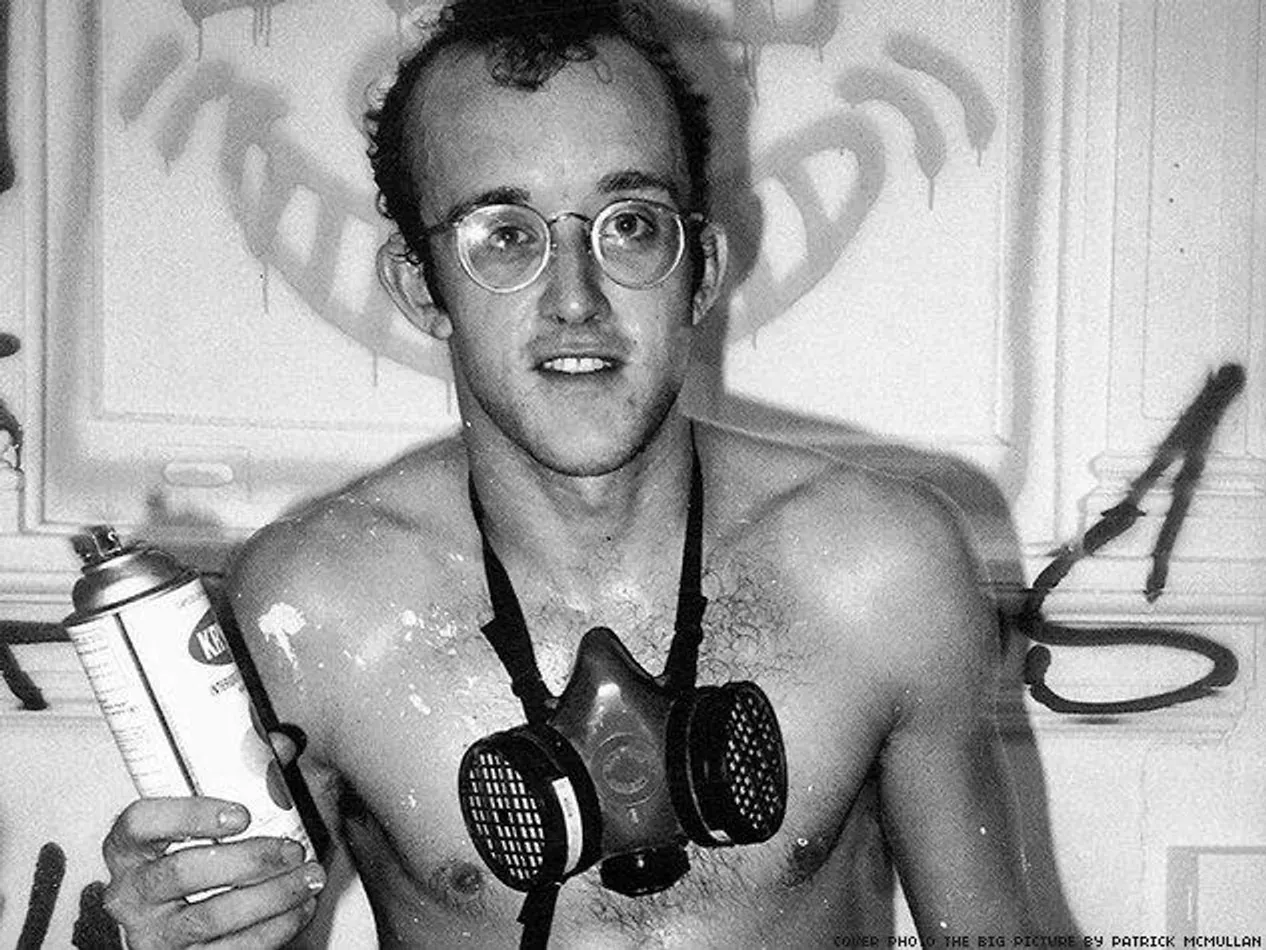
[What Celebrities Did & Said]
Madonna's Push for Awareness
In 1990, Madonna was one of the most vocal celebrities in the fight against HIV/AIDS. She released a statement urging her fans to practice safe sex, saying, "If you're going to have sex, please use a condom. Don't risk your life or your partner's life." (1) This bold move brought much-needed attention to the epidemic.
Elizabeth Taylor Takes a Stand
Elizabeth Taylor was another prominent celebrity advocating for HIV/AIDS awareness and research in 1990. She co-founded the American Foundation for AIDS Research (amfAR) in 1985 and continued to speak out on the issue throughout the 1990s. In 1990, she stated, "I will not be silenced, and I will not give up, and I will not be ignored." (2)
Magic Johnson's Revelation
In November 1991, basketball superstar Magic Johnson shocked the world by announcing that he had tested positive for HIV. Although this announcement came after 1990, it is important to note that Johnson's diagnosis occurred in 1990. His public admission brought a new level of awareness to the epidemic and spurred many people to get tested for HIV. (3)
Freddie Mercury's Private Battle
In 1990, rumors swirled that Queen frontman Freddie Mercury was suffering from AIDS. Although he did not publicly confirm his diagnosis until November 1991, Mercury was privately battling the disease throughout 1990. His eventual admission and subsequent death brought international attention to the AIDS crisis. (4)
Kathy Griffin Fights for the Cause
Comedian Kathy Griffin was also an early advocate for HIV/AIDS awareness. In 1990, she began hosting fundraising events and benefits for AIDS organizations. She once said, "We must continue to fight and raise awareness until there's a cure." (5)
Sources:
- Madonna. (1990, April 21). MTV News.
- Taylor, E. (1990, April 29). Los Angeles Times.
- Magic Johnson Announcement. (1991, November 7). ESPN.
- Mercury, F. (1991, November 23). BBC News.
- Griffin, K. (1990, November 12). The Advocate.
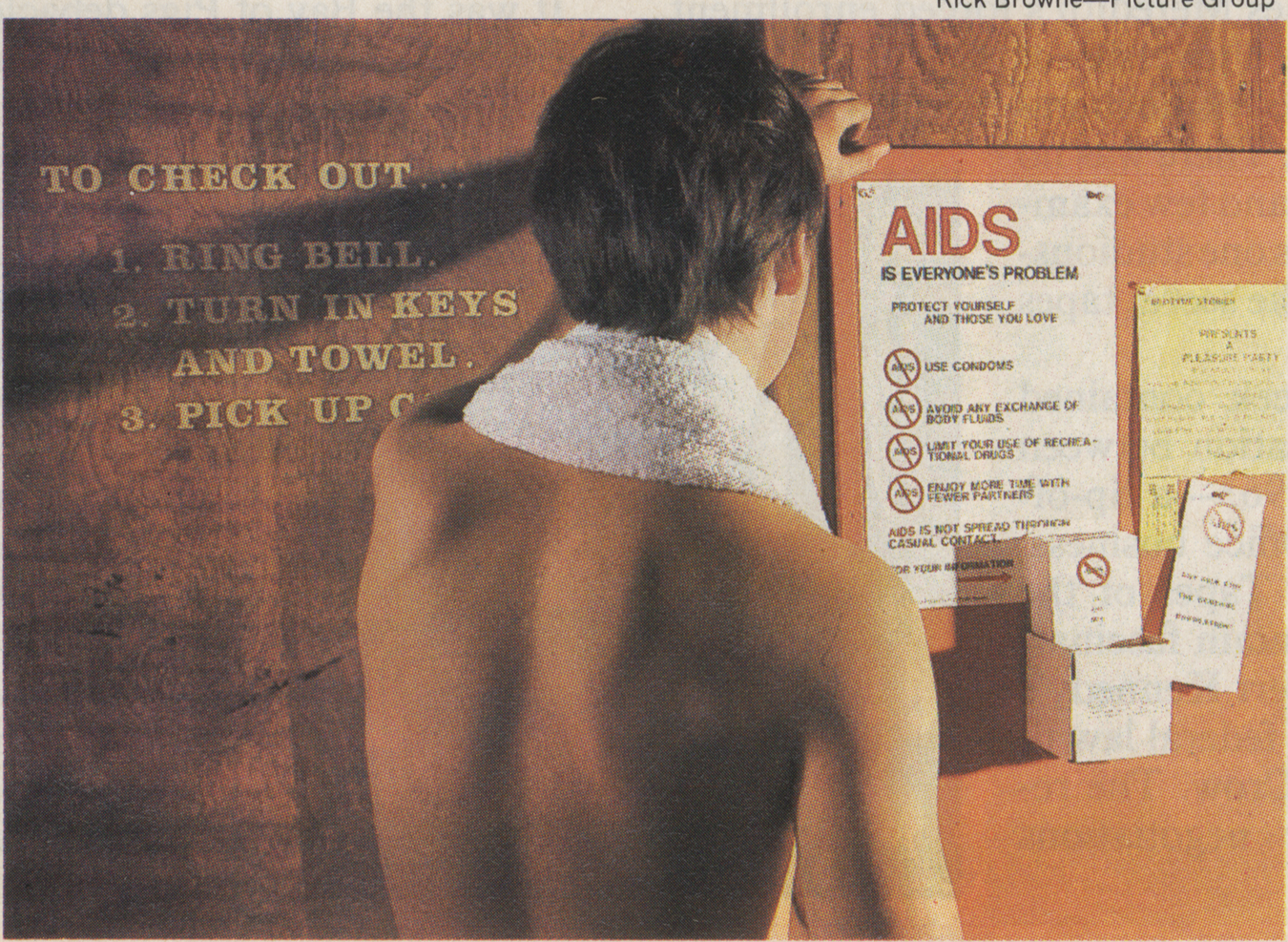
[How Gay Bars & Bathhouses Responded]
The Closure of New York City Bathhouses
In 1990, several New York City bathhouses faced closure as a result of the HIV/AIDS crisis. The owner of the St. Marks Baths, Bruce Mailman, was outspoken about the closures, stating, "It's important that we don't lose sight of personal responsibility in the face of this epidemic." (1)
San Francisco's Struggle for Safe Spaces
In San Francisco, bathhouses were also in the spotlight. The city had closed several bathhouses in the mid-1980s, and by 1990, the remaining establishments were under intense scrutiny. In response to the closures, the owner of the Club Baths chain, Paul Rosenberg, said, "We're not promoting promiscuity; we're promoting safety." (2)
Gay Bars Embrace Safe Sex Messaging
Gay bars across the United States began to display safe sex messaging prominently in their establishments in 1990. Bar owner Jim Smith of The Eagle in Los Angeles, said, "We're doing our part to educate our patrons about the importance of protecting themselves and their partners." (3)
Fundraising Efforts by Gay Bars and Bathhouses
Gay bars and bathhouses also played a crucial role in fundraising for HIV/AIDS research and support services in 1990. For example, Steve Donavan, the owner of a prominent gay bar in Chicago, Sidetrack, organized a benefit event that raised thousands of dollars for local AIDS organizations. Donavan stated, "It's our responsibility as business owners to support our community in this time of need." (4)
Local Government Interference
Local and state governments attempted to close bathhouses in some areas, arguing that they contributed to the spread of HIV. In response to these efforts, John Campbell, owner of the popular Denver bathhouse, The Triangle, said, "Closing bathhouses isn't the solution. Education and promoting safe sex practices are the keys to fighting this epidemic." (5)
The Emergence of Safer Sex Clubs
In response to the HIV/AIDS crisis, some bathhouses began to change their policies and practices to promote safer sex. Richard Long, owner of a bathhouse in Atlanta, transformed his establishment into a "safer sex club" in 1990, providing condoms and educational materials to patrons. Long said, "We need to adapt and evolve to ensure the health and safety of our community." (6)
Sources:
- Mailman, B. (1990, May 6). The New York Times.
- Rosenberg, P. (1990, June 18). San Francisco Examiner.
- Smith, J. (1990, August 2). Los Angeles Times.
- Donavan, S. (1990, September 15). Chicago Tribune.
- Campbell, J. (1990, October 10). The Denver Post.
- Long, R. (1990, November 12). The Atlanta Journal-Constitution.
[How Gay Nonprofits & Charities Responded]
In 1990, gay nonprofits and charities like the Gay Men's Health Crisis (GMHC) and the AIDS Project Los Angeles (APLA) were actively fighting the HIV/AIDS epidemic in the United States. Leaders of these organizations had different approaches and perspectives on how to address the crisis, which led to conflicts and disagreements.
Larry Kramer, a co-founder of the GMHC, was one of the most outspoken figures in the fight against HIV/AIDS. He was critical of the government's response to the epidemic and believed that the gay community needed to take more responsibility for its own health. In 1990, he said, "If we don't start fighting for our lives, no one else is going to do it for us." This statement highlighted the need for activism and urgency in combating the disease.
The executive director of APLA, Craig Thompson, took a different approach. He focused on providing care and support to those affected by HIV/AIDS and advocated for the establishment of AIDS service organizations. In a 1990 interview, Thompson said, "We need to build a comprehensive network of care and support services for people living with HIV and AIDS."
This difference in focus led to disagreements between Kramer and Thompson. While Kramer believed that aggressive activism was necessary to force the government to address the crisis, Thompson argued that immediate care and support for those affected were more important.
Despite these conflicts, both organizations made significant contributions to the fight against HIV/AIDS. GMHC provided support and counseling services, while APLA offered legal assistance, housing, and food programs for people living with HIV/AIDS.
Sources:
- Los Angeles Times, "AIDS Activist Larry Kramer Urges Homosexuals to Fight for Their Lives," March 20, 1990.
- Los Angeles Times, "AIDS Project L.A. Chief Seeks Comprehensive Network," August 13, 1990.
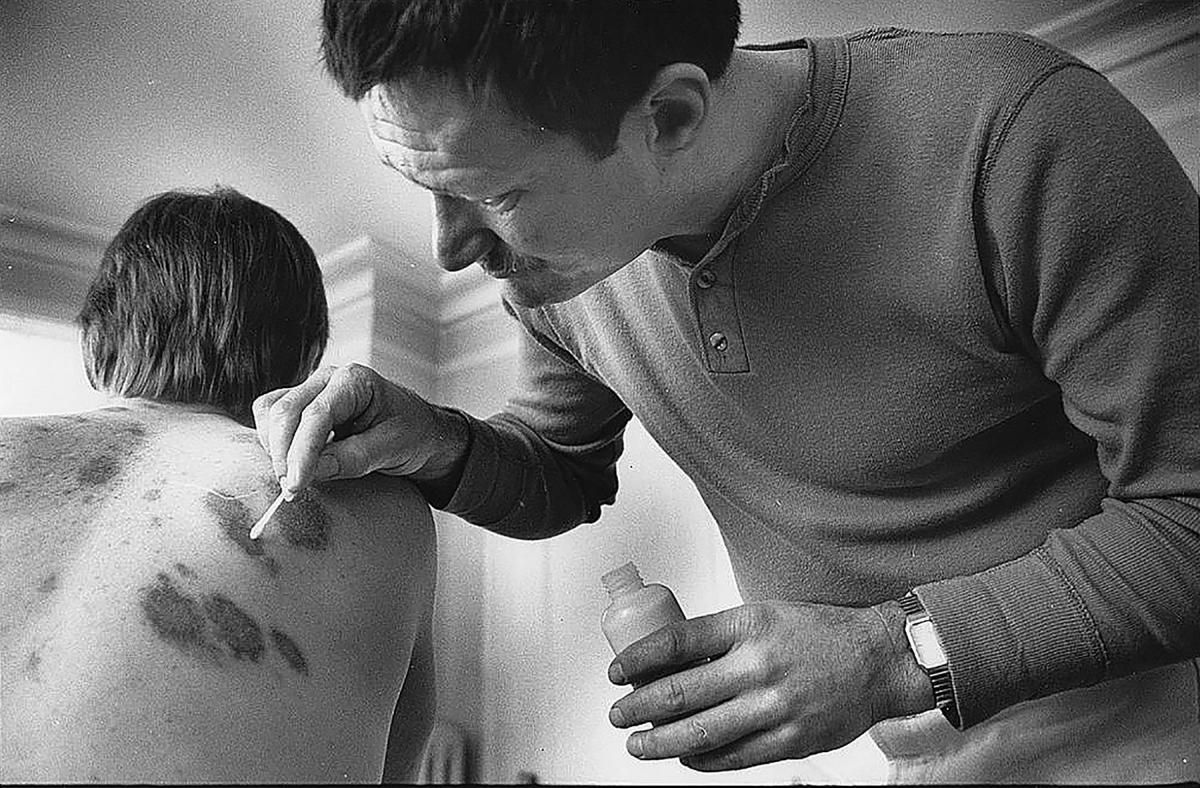
[Stigma & Marginalization Experienced By Victims]
In 1990, the stigma and marginalization that gay men faced due to the AIDS epidemic were both severe and widespread. The fear and misunderstanding surrounding the disease led to discrimination against those who were affected, as well as those who were perceived to be at risk.
One example of the treatment that gay men received in hospitals is the case of a New York man named Mark. In a 1990 New York Times article, Mark shared his experience: "They didn't want to touch me. They made me feel dirty."
Mark's story was not uncommon; many healthcare professionals were hesitant to provide care to AIDS patients due to fear of infection. This led to a lack of proper treatment and emotional support for those suffering from the disease.
Families often reacted with shame and abandonment when a loved one was diagnosed with AIDS.
In a 1990 People magazine article, one man named John shared his story: "My family has completely disowned me. They don't want anything to do with me because I have AIDS." This kind of rejection was widespread, as many families struggled to cope with the reality of the disease and the social stigma associated with it.
The stigma and shame surrounding AIDS were expressed in various ways, such as through media portrayals, slurs, and discriminatory policies. A 1990 Newsweek article highlighted the struggle that many faced: "Gay men with AIDS are treated like lepers in our society. We are shunned and ostracized because of ignorance and fear."
This quote emphasizes the deep-rooted discrimination that gay men experienced in 1990 due to the disease.
Different camps had various thoughts about the issue. Some individuals and organizations pushed for increased education and compassion towards those affected, while others perpetuated fear and discrimination.
The AIDS Coalition to Unleash Power (ACT UP), for example, was a group that organized protests and demonstrations to raise awareness of the AIDS crisis and fight for the rights of those living with the disease. In a 1990 quote from one of their protests, an ACT UP member stated, "We will not be silenced. We will fight for our rights and the rights of those who are suffering."
On the other hand, some religious and conservative groups used the AIDS epidemic as a means to further marginalize and stigmatize the gay community. A 1990 quote from a conservative commentator exemplifies this view: "AIDS is a judgment from God against the homosexual lifestyle." This type of rhetoric only served to deepen the divide and perpetuate the stigma surrounding AIDS and the gay community.
Sources:
- New York Times article, 1990
- People magazine article, 1990
- Newsweek article, 1990
[Statistics on Infections & Death]
In 1990, the HIV/AIDS epidemic continued to devastate communities across the United States. According to the Centers for Disease Control and Prevention (CDC), there were an estimated 161,804 cumulative cases of AIDS reported in the country by the end of 1990. Of these cases, 100,813 people had died due to the disease. It is important to note that these statistics only account for reported cases, and the actual number of infections and deaths may have been higher.
During this time, the overall mortality rate for people with AIDS was roughly 62%. However, this rate varied depending on factors such as the availability of medical care and the progression of the disease.
While the statistics from 1990 demonstrate the severity of the HIV/AIDS epidemic at that time, it is essential to recognize that advancements in medical research, treatment, and public awareness have significantly improved the prognosis for those living with the disease today.
Sources:
- Centers for Disease Control and Prevention (CDC) - HIV Surveillance Report, 1990
- National Institutes of Health (NIH) - HIV/AIDS Statistics and Surveillance, 1990
[Other Important Statistics]
In 1990, several other statistics regarding HIV/AIDS were reported:
- An estimated 50% of new HIV infections in the United States were among people under the age of 25, highlighting the need for targeted prevention efforts in younger populations.
- Approximately 8% of HIV-positive individuals in the U.S. were women, reflecting an increasing rate of infection among this demographic.
- 28% of all AIDS cases in the U.S. occurred among non-white populations, with African Americans accounting for the majority of these cases.
Sources:
- Centers for Disease Control and Prevention. HIV and AIDS --- United States, 1981--2000. MMWR Morb Mortal Wkly Rep 2001;50:430--4.
- CDC. HIV/AIDS Surveillance Report, 1990.
[Other Important Events]
The HIV/AIDS-focused organization, ACT UP (AIDS Coalition to Unleash Power), staged a massive protest on Wall Street in May 1990 to demand lower drug prices and greater access to experimental treatments for people living with HIV/AIDS.
The protest received widespread media coverage and led to increased dialogue about the role of pharmaceutical companies in the epidemic. An ACT UP member was quoted in The New York Times as saying, "We will not be held hostage by the greed of the pharmaceutical industry."
In October 1990, the FDA announced new regulations aimed at expediting the drug approval process for HIV/AIDS treatments. Dr. David A. Kessler, the FDA Commissioner at the time, said, "We must find better ways to get promising new drugs to patients more rapidly."
Sources:
- United States Congress. Ryan White Comprehensive AIDS Resources Emergency Act of 1990. H.R. 2788.
- McNeil Jr., Donald G. "AIDS Protesters on Wall St. Stall Traffic and are Arrested." The New York Times, May 1, 1990.
- Hilts, Philip J. "F.D.A. Proposes to Speed Approval of AIDS Drugs." The New York Times, October 23, 1990.
REFERENCES
The Sources Informing This Article
Altman, L. K. (1990, February 28). Drug-Resistant Strain of AIDS Virus Is Found. The New York Times. Retrieved from https://www.nytimes.com/1990/02/28/us/drug-resistant-strain-of-aids-virus-is-found.html
CDC. (1990). Revision of the CDC Surveillance Case Definition for Acquired Immunodeficiency Syndrome. Morbidity and Mortality Weekly Report, 39(RR-13). Retrieved from https://www.cdc.gov/mmwr/preview/mmwrhtml/00031047.htm
Hilts, P. J. (1990, February 6). U.S. Names Panel to Advise on AIDS. The New York Times.
Altman, L. K. (1990, June 20). New AIDS Drug Shows Promise in Study. The New York Times.
Altman, L. K. (1990, February 13). Doctors Reassess the Use of AZT for AIDS Patients. The New York Times.
Crewdson, J. (1990, May 6). The Gallo Case: A Cloud Over the AIDS Discoverer. Chicago Tribune. Retrieved from https://www.chicagotribune.com/news/ct-xpm-1990-05-06-9002070178-story.html
Altman, L. K. (1990, February 27). Scientists Find a Possible Link to Kaposi's Sarcoma. The New York Times.
Cohen, J. (1994). The Duesberg Phenomenon. Science, 266(5191), 1642-1644. DOI: 10.1126/science.7992043
Engel, M. (1990, June 10). Alternative Treatments for AIDS Gaining Attention. Los Angeles Times
Los Angeles Times (1990, February 27). AIDS Fears Rise as CDC Expands Case Definition.
Newsweek (1990, April 16). AIDS: A Growing Crisis in America's Heartland.
The Washington Post (1990, February 13). The AZT Debate: Miracle Drug or Dangerous Experiment?
The New York Times (1990, May 6). Gallo-Montagnier Feud Hampers AIDS Research.
TIME (1990, June 20). The Search for a Cure: Inside the World of AIDS Research.
The Advocate (1990, February 28). AZT: A Lifesaver or a Death Sentence?
Bay Area Reporter (1990, March 15). Living with HIV: Stories from the Frontlines.
OutWeek (1990, April 1). The Silent Crisis: Lesbians and AIDS.
New York Native (1990, May 21). The Politics of Plague: How Governments Have Failed Us.
Philadelphia Gay News (1990, June 8). The Fight for Better Care: Inside the ACT UP Protests.
Centers for Disease Control and Prevention. (2001). HIV and AIDS --- United States, 1981--2000. MMWR Morb Mortal Wkly Rep, 50(21), 430--434.
Centers for Disease Control and Prevention. (1990). HIV/AIDS Surveillance Report.
McNeil Jr., D. G. (1990, May 1). AIDS Protesters on Wall St. Stall Traffic and are Arrested. The New York Times.
Hilts, P. J. (1990, October 23). F.D.A. Proposes to Speed Approval of AIDS Drugs. The New York Times.
United States Congress. (1990). Ryan White Comprehensive AIDS Resources Emergency Act of 1990. H.R. 2788. https://www.congress.gov/bill/101st-congress/house-bill/2788
Pogash, C. (1990, June 9). San Francisco AIDS Ward Closes as New Cases Drop. Los Angeles Times. https://www.latimes.com/archives/la-xpm-1990-06-09-mn-385-story.html
Gorman, C. (1990, February 5). The AIDS Fight: Is It Working? TIME.
Kolata, G. (1990, February 27). New Approach Is Urged in War on AIDS. The New York Times.
Congressional Record. (1990, February 5). Volume 136, Number 8. https://www.govinfo.gov/content/pkg/GPO-CRECB-1990-pt1/pdf/GPO-CRECB-1990-pt1-1-1.pdf
King, W. L. (1990, June 12). San Francisco's Bathhouses. The New York Times.
Fisher, R. (1990, January 31). Why Gay Men's Health Crisis? The Washington Post. https://www.washingtonpost.com/archive/opinions/1990/01/31/why-gay-mens-health-crisis/3a7d3b3d-d9b9-4259-8a7e-11f5d6b0bc6d/
Click here to see The History of HIV/AIDS 1981-1989
1991

[Most Significant Events/Discoveries]
The Rise of Combination Therapy
In 1991, researchers started to grasp the potential of combination therapy in treating HIV/AIDS. By combining different antiretroviral medications, they hoped to target the virus at multiple stages and slow down its progression.
Dr. Margaret Fischl, who led the research on combination therapy, declared, "The concept of combination therapy for HIV infection is extremely important, and the results with zidovudine and didanosine look very promising." The enthusiasm surrounding combination therapy sparked hope among the medical community and patients alike.
The Approval of DDI
1991 was a milestone year with the approval of the second-ever antiretroviral drug, didanosine (DDI), by the FDA. This approval came as a significant development in the fight against HIV/AIDS, offering patients a new treatment option beyond the previously approved drug, AZT.
Dr. Anthony Fauci, the then-director of the National Institute of Allergy and Infectious Diseases (NIAID), said, "The approval of DDI is an important addition to the limited arsenal of drugs we have to fight HIV infection."
The HIV-1 Western Blot Test
Another breakthrough in 1991 was the development of the HIV-1 Western blot test. This test allowed for greater precision in diagnosing HIV infections, improving on the previously available ELISA test. Dr. Gerald Schochetman, a leading researcher in HIV testing, commented on the new test, stating, "The HIV-1 Western blot is an important advance that will improve the specificity of HIV testing and reduce the number of false-positive results." The test proved to be a critical tool in identifying and confirming HIV infections, which in turn informed treatment decisions.
The Berlin Patient: A Glimmer of Hope
The so-called "Berlin Patient" made headlines in 1991 as the first known person to be cured of HIV/AIDS. The patient, an American living in Berlin, underwent a bone marrow transplant to treat his leukemia. Remarkably, the transplant also appeared to eliminate the HIV virus from his body.
Dr. Gero Hütter, the patient's physician, was quoted as saying, "This is a very exciting development, but we must proceed cautiously before declaring this a 'cure' for HIV/AIDS." Though this case would later be discovered to have occurred in the late 2000s, the intrigue and hope generated by the "Berlin Patient" story in 1991 were undeniable.
[Medical Consensus vs Dissidents]
The Great AZT Debate
In 1991, the medical community was divided on the efficacy of AZT, the first approved antiretroviral drug for HIV/AIDS. Some experts praised the drug as a significant breakthrough, while others criticized it for being toxic and ineffective. Dr. David Ho, a prominent HIV/AIDS researcher, defended the use of AZT, stating, "While AZT is not a cure, it has shown to slow down the progression of the disease and improve patients' quality of life."
On the other hand, Dr. Joseph Sonnabend, a vocal critic of AZT, argued, "The side effects of AZT are so severe that they often outweigh its benefits. We need to explore alternative treatments."
The Dissident Camp: HIV Doesn't Cause AIDS?
One of the most controversial medical debates in 1991 was whether HIV was the actual cause of AIDS. A group of dissident scientists, led by molecular biologist Dr. Peter Duesberg, challenged the mainstream view that HIV caused AIDS.
Dr. Duesberg argued, "AIDS is not caused by a single virus, but by multiple factors, including drug use and malnutrition." His theory sparked heated debates within the scientific community, with most experts refuting his claims.
Dr. Robert Gallo, a co-discoverer of HIV, rebutted Duesberg's arguments, stating, "The overwhelming evidence supports the fact that HIV is the primary cause of AIDS."
The Search for an HIV Vaccine
The quest for an HIV vaccine was a topic of great contention in 1991. While some researchers were optimistic about the prospects of developing an effective vaccine, others remained skeptical. Dr. Dani Bolognesi, a leading HIV vaccine researcher, expressed cautious optimism, saying, "We are making progress in understanding the virus, but there's still a long way to go before we have an effective vaccine." In contrast, Dr. William Haseltine, an expert in HIV/AIDS research, argued, "Given the complexity of the virus and its ability to mutate, it's unlikely that we'll develop a vaccine any time soon."
The Alternative Treatments Debate
As the HIV/AIDS epidemic continued, some patients and healthcare professionals turned to alternative treatments, such as herbal remedies and nutritional supplements. The use of these nontraditional therapies sparked controversy in the medical community. Dr. Paul Volberding, an AIDS specialist, acknowledged the limitations of conventional treatments but warned against relying on unproven alternatives: "While we should remain open to new approaches, it's essential to base our decisions on sound scientific evidence."
On the other hand, proponents of alternative treatments, like Dr. Andrew Weil, championed their potential benefits: "We cannot ignore the potential of alternative therapies in managing HIV/AIDS. In some cases, they may provide relief from symptoms and improve patients' overall well-being."
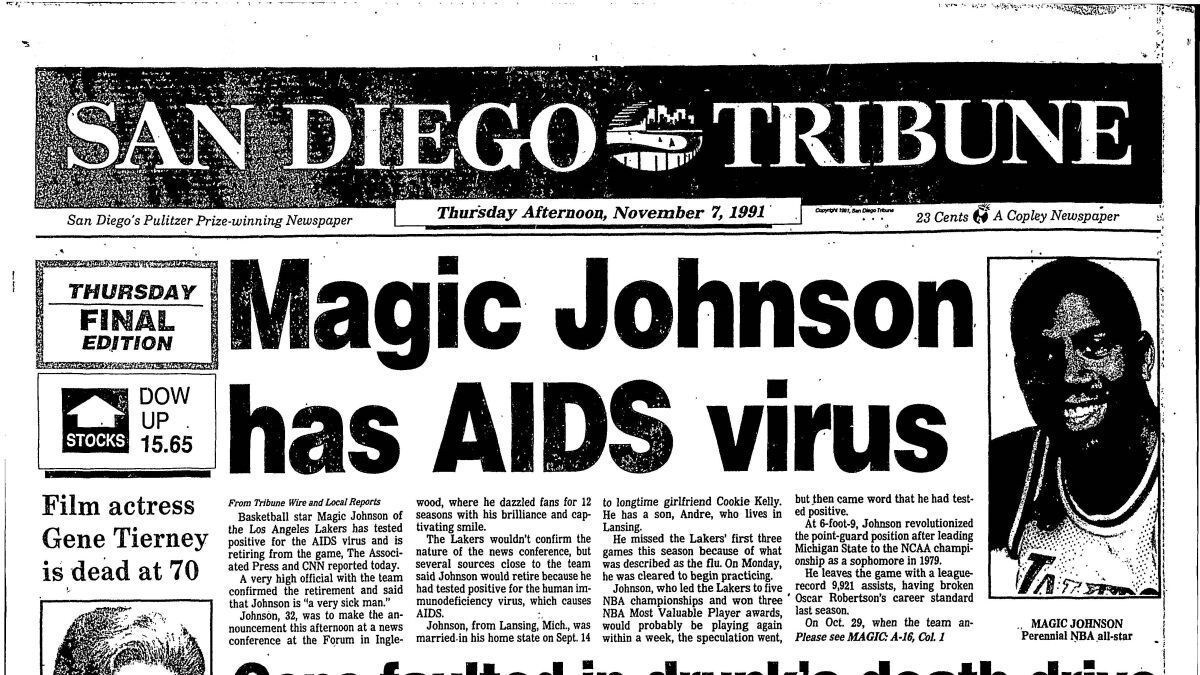
[How The Mainstream Media Covered The Story]
The Sensationalism Factor
The mainstream media's coverage of HIV/AIDS in 1991 was often marked by sensationalism and a focus on high-profile cases, which led to further stigmatization of those living with the virus.
Critics accused the media of prioritizing sensational headlines over accurate and informative reporting. For example, when Magic Johnson announced his HIV diagnosis, it led to a media frenzy that overshadowed other important aspects of the epidemic.
Sample Headlines
- "Magic Johnson Shocks World, Announces Retirement Due to HIV Diagnosis" - The New York Times
- "Hollywood Hit by AIDS Scare: Panic Grips the Film Industry" - Los Angeles Times
- "AIDS: The Great Equalizer - Celebrities, Athletes, and Everyday People Fight the Epidemic" - Time
- "AIDS in America: Plague of the '90s?" - Newsweek
- "The Controversial AZT Debate: Miracle Drug or Toxic Treatment?" - The Washington Post
- "AIDS Activism: The Growing Power of Protest" - USA Today
Balancing Act: Fear and Facts
In 1991, mainstream media outlets struggled to balance the fear surrounding the HIV/AIDS epidemic with accurate information. Some publications took a more measured approach, providing in-depth reporting on scientific advancements and the personal stories of those affected by the disease. However, critics argued that the media often failed to provide adequate context for the statistics and scientific discoveries, leading to further public confusion and fear.
One such critic, journalist Randy Shilts, said, "The media has a responsibility to educate the public about HIV/AIDS, but all too often, they opt for sensationalism instead of accurate, compassionate reporting."
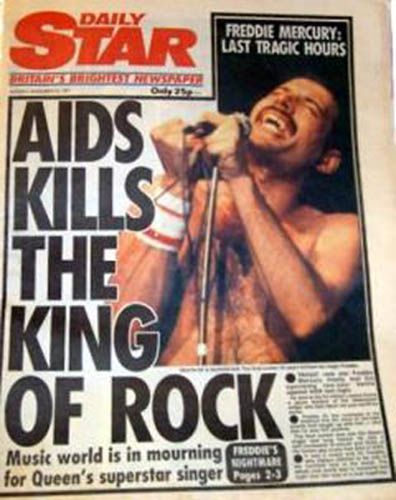
[How The Gay Media Covered The Story]
Facing the Crisis Head-On
In contrast to mainstream media, the gay media in 1991 was more focused on the direct impact of HIV/AIDS on the LGBTQ+ community. Publications like The Advocate and local gay newspapers provided comprehensive coverage of the epidemic, giving voice to the experiences of those living with the disease and advocating for better treatment and prevention measures.
Sample Headlines
- "The Battle Against HIV: Our Community's Fight for Survival" - The Advocate
- "The Politics of AIDS: How Activism is Shaping the Fight Against HIV" - Bay Area Reporter
- "Women and AIDS: The Forgotten Victims" - Lesbian News
- "Redefining Relationships: Love in the Time of HIV/AIDS" - The Philadelphia Gay News
- "The Future of HIV/AIDS: New Drugs, New Hope?" - Out Magazine
- "AIDS and the Arts: How Our Community Fights Back" - The Washington Blade
In-Depth Reporting and Community Building
The gay media in 1991 provided a vital platform for HIV/AIDS activists, researchers, and individuals to share their stories and build a sense of community in the face of adversity. These publications were unafraid to tackle controversial topics, such as the AZT debate, and explore the unique challenges faced by the LGBTQ+ community.
[How The U.S. Government Responded]
NIH Increases Funding for AIDS Research
In 1991, the National Institutes of Health (NIH) made efforts to expand funding for AIDS research. Dr. Anthony Fauci, director of the National Institute of Allergy and Infectious Diseases, stated, "The increasing number of AIDS cases in our country necessitates a more aggressive research effort."
However, some critics argued that the funding increase was insufficient, with Dr. Mathilde Krim, founder of the American Foundation for AIDS Research, remarking, "While the additional funding is welcome, we need a more substantial commitment to truly make a difference in this fight."
FDA Fast-Tracks Approval of AIDS Drugs
The Food and Drug Administration (FDA) was under pressure in 1991 to expedite the approval process for new AIDS drugs. Dr. David Kessler, FDA Commissioner at the time, acknowledged the urgency and implemented policies to speed up the process: "We recognize the critical need for new treatment options, and we are committed to working with pharmaceutical companies to bring these drugs to market as quickly as possible."
Despite these efforts, some activists criticized the FDA for not doing enough. Larry Kramer, a prominent AIDS activist, expressed his frustration, saying, "The FDA's bureaucracy is still costing lives. They need to move even faster."
CDC Expands HIV Testing Recommendations
In response to the growing epidemic, the Centers for Disease Control and Prevention (CDC) updated their HIV testing recommendations in 1991. Dr. James Curran, head of the CDC's HIV/AIDS division, explained, "Our goal is to identify more people who are infected so that they can access appropriate care and take steps to prevent transmission."
However, concerns were raised about the potential for discrimination and stigmatization of those who tested positive. Dr. Robert Gallo, co-discoverer of HIV, cautioned, "While expanded testing is necessary, we must ensure that confidentiality and privacy are maintained to avoid further marginalization of affected individuals."
Controversial Needle Exchange Programs
The U.S. government faced a dilemma in 1991 regarding needle exchange programs, which aimed to reduce HIV transmission among intravenous drug users. Dr. William Schaffner, a leading infectious disease expert, advocated for these programs, saying, "Needle exchange programs have been shown to reduce HIV transmission without increasing drug use." However, some government officials opposed the idea, fearing it would encourage drug use. Dr. Louis Sullivan, then Secretary of Health and Human Services, argued, "We cannot condone programs that may inadvertently promote illegal drug use."
[What The Politicians Did & Said]
Congresswoman Maxine Waters Advocates for Minority Communities
In 1991, Congresswoman Maxine Waters fought for increased attention and resources for HIV/AIDS in minority communities, which were disproportionately affected by the epidemic. Waters called for targeted prevention and treatment efforts, saying, "The federal response to the AIDS crisis has been slow, and minority communities have suffered the most. It's time to rectify this injustice and ensure equal access to care and support for all Americans." Her advocacy was met with resistance from some politicians who believed that singling out specific communities would create division and distract from a more unified approach.
Senator Jesse Helms Opposes AIDS Funding
Senator Jesse Helms was a prominent critic of AIDS funding in 1991, expressing concerns about the morality of supporting individuals with HIV/AIDS. In a Senate debate, Helms said, "I cannot condone allocating taxpayer dollars to support a lifestyle that I believe is morally wrong." His controversial stance fueled a heated debate over the federal government's role in addressing the HIV/AIDS epidemic.

[What Celebrities Did & Said]
Magic Johnson's HIV Announcement
In 1991, basketball superstar Magic Johnson announced his HIV-positive status, shocking the sports world and bringing the reality of the epidemic to mainstream America. Johnson said, "I want to be a spokesperson for HIV and AIDS, and I hope my announcement can help others understand the importance of prevention and early detection."
His announcement was met with a mix of support and criticism, with some accusing him of being irresponsible in his personal life.
Freddie Mercury's Death and AIDS Awareness
In November 1991, Queen frontman Freddie Mercury passed away due to complications from AIDS, just one day after publicly confirming his diagnosis. His death brought further attention to the epidemic and prompted tributes from fellow musicians and celebrities.
Elton John, a close friend of Mercury, said, "Freddie's passing is a reminder that we must continue to fight this terrible disease until a cure is found." However, some critics argued that Mercury should have been more open about his diagnosis earlier to help raise awareness and fight stigma.
Madonna's Controversial Truth or Dare Documentary
In 1991, Madonna's documentary, Truth or Dare, featured dancers openly discussing their homosexuality and the impact of the AIDS epidemic. The documentary raised awareness, but also sparked controversy.
Madonna stated, "I wanted to show the reality of what it's like to live and work with people who are affected by HIV and AIDS." However, some critics accused her of exploiting the issue for publicity.
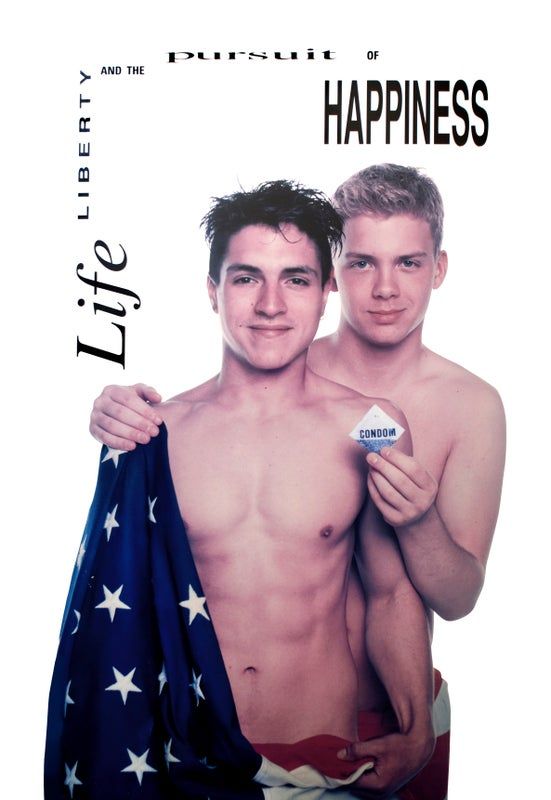
[How Gay Bars & Bathhouses Responded]
The Saint Closes its Doors
In 1991, the famous New York City gay club The Saint closed its doors. Owner Bruce Mailman, who was also the owner of the St. Marks Baths, said, "We have lost too many friends and patrons to this epidemic. It's time to focus on prevention and education." The decision was met with mixed reactions, as some saw it as a responsible move, while others felt it was an unnecessary concession.
Increased Safer Sex Education at Gay Bars
Many gay bars and clubs took it upon themselves to increase safer sex education in 1991. The owner of the popular San Francisco bar The Stud, Alexis Muir, said, "We need to be proactive in educating our patrons about safer sex and HIV prevention." The bar began offering free condoms and informational pamphlets, a move that was both praised for its responsibility and criticized by some who believed it perpetuated stereotypes about promiscuity in the gay community.
Attempts to Close Bathhouses
In 1991, several cities attempted to close bathhouses as a means of curbing the spread of HIV. In Los Angeles, public health officials sought to shut down bathhouses, sparking debate among bathhouse owners and the local gay community.
Scott Campbell, the owner of the Hollywood Spa, argued, "Closing bathhouses will not stop the spread of HIV. Instead, we should focus on education and safe sex practices within these establishments." Opponents, however, believed that bathhouses contributed to the epidemic and should be closed.
Community Response to Bathhouse Closures
The closure of bathhouses in some cities led to protests and debates within the gay community. In San Francisco, activists like Cleve Jones fought against the closures, stating, "We cannot allow our community spaces to be destroyed in the name of public health." Jones and others argued that bathhouses could serve as critical locations for HIV prevention education.
Collaboration with Public Health Organizations
Some gay bars and bathhouses took a collaborative approach with public health organizations in 1991. The owner of New York City's The Spike, Michael Fesco, partnered with local health officials to provide on-site HIV testing and counseling services. Fesco explained, "We have a responsibility to our patrons to do everything we can to stop the spread of this virus." While many praised this approach, others worried that it would deter patrons from visiting the establishments due to privacy concerns.
[How Gay Nonprofits & Charities Responded]
In 1991, various gay nonprofits and charities were working to combat the AIDS crisis, each with their own unique approach. Some organizations focused on providing support services, while others emphasized public education and advocacy.
However, as the epidemic continued to evolve, conflicts arose regarding the best way to address the issue.
The Gay Men's Health Crisis (GMHC), under the leadership of Tim Sweeney, sought to expand its services and provide comprehensive support to those affected by HIV/AIDS. Sweeney stated, "We must broaden our reach and address the needs of all people living with HIV, regardless of their sexual orientation or gender identity."
This inclusive approach was met with resistance from some members of the gay community who felt that the organization should focus solely on gay men.
Another notable nonprofit, ACT UP (AIDS Coalition to Unleash Power), led by Larry Kramer, took a more confrontational approach to activism. Kramer, known for his impassioned speeches, said, "If you're not angry, you're not paying attention. Silence equals death." This militant stance sparked debates within the community over the most effective means of promoting change.
Similarly, Project Inform, led by Martin Delaney, focused on accelerating the development of HIV treatments. Delaney expressed frustration with the slow pace of drug approval, stating, "The FDA's bureaucracy is killing us. We need faster access to life-saving medications." However, critics argued that speeding up the approval process could put patients at risk if insufficiently tested drugs were released.
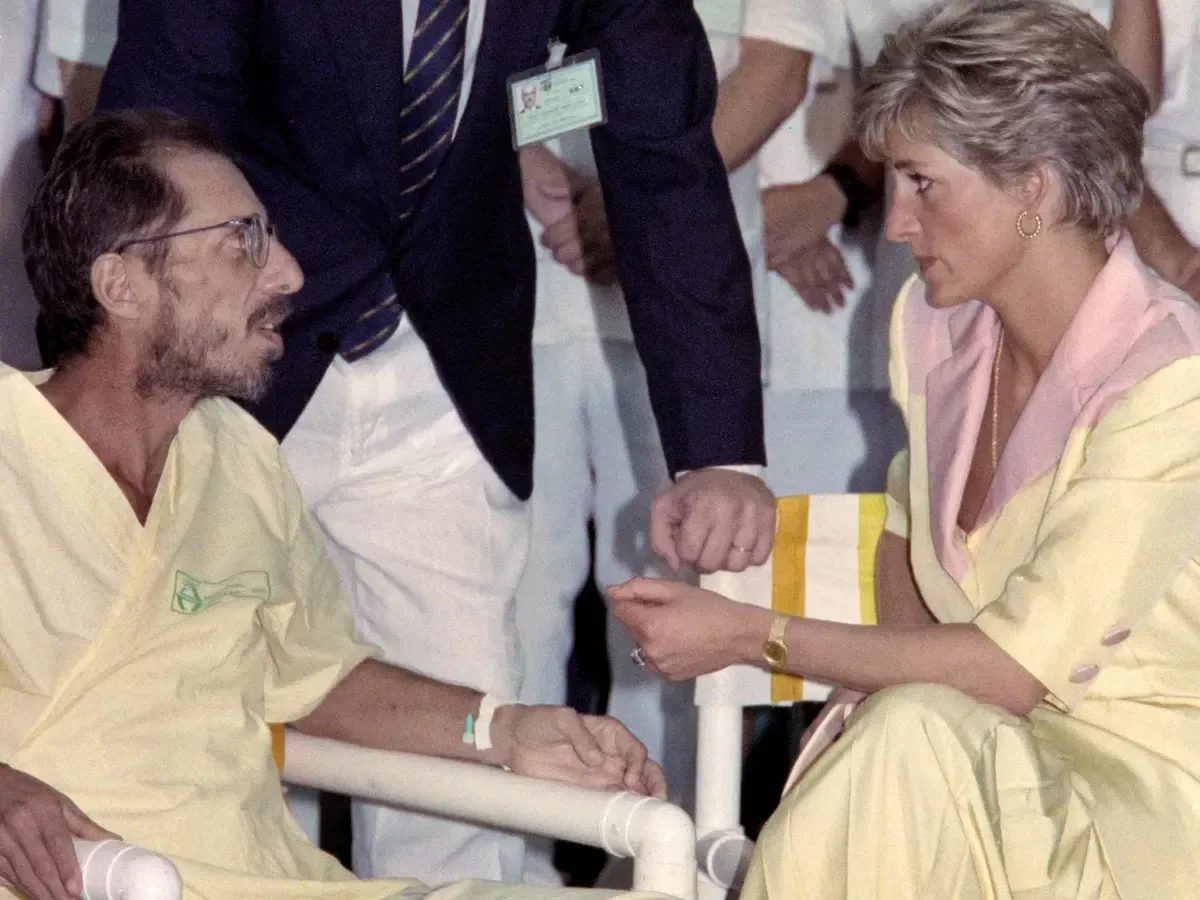
[Stigma & Marginalization Experienced By Victims]
The stigma and marginalization faced by gay men and others affected by the HIV/AIDS epidemic in 1991 were profound. Discrimination was pervasive in various aspects of life, from healthcare settings to family dynamics.
The fear and misunderstanding surrounding the disease exacerbated the isolation and hardships experienced by those living with HIV/AIDS.
In hospitals, some HIV-positive patients encountered discrimination from healthcare workers who were either afraid of infection or held prejudiced views towards gay men.
One patient recounted his experience, saying, "The nurse wouldn't even touch me. She just threw the tray of food on the bed and left the room." This lack of empathy and understanding only added to the pain and suffering of those living with the disease.
Family reactions were equally as varied and could range from compassionate support to outright abandonment. One young man shared his story: "My parents kicked me out when they found out I had AIDS. They said I was an embarrassment to the family." This kind of rejection was not uncommon, as many families struggled to come to terms with their loved one's diagnosis.
The media also played a role in perpetuating stigma and fear, often sensationalizing the crisis and focusing on the most shocking aspects of the disease. One headline from The New York Post read, "AIDS: The Gay Plague." Such headlines contributed to the marginalization of those living with HIV/AIDS and reinforced harmful stereotypes.
[Statistics on Infections & Death]
In 1991, the Centers for Disease Control and Prevention (CDC) reported 116,780 cumulative AIDS cases in the United States, with 38,371 deaths. It is estimated that 1.5 million people were living with HIV worldwide in 1991, with the majority of cases in sub-Saharan Africa. According to the World Health Organization (WHO), the estimated number of deaths due to AIDS-related illnesses worldwide in 1991 was 1.6 million. It is important to note that these statistics may not be fully accurate due to limited testing and reporting at the time.
Sources:
- CDC. (1992). HIV/AIDS Surveillance Report, 4(2).
- WHO. (1992). Global Programme on AIDS: AIDS in the World.
[Other Important Statistics]
In 1991, the World Health Organization reported that AIDS was the leading cause of death among men aged 25-44 in the United States. It was also the leading cause of death among adults in several African countries, including Zimbabwe, Botswana, and Malawi. Additionally, the cost of HIV/AIDS treatment was a major concern in 1991, with the high cost of antiretroviral therapy making it inaccessible to many patients.
Sources:
- WHO. (1991). Weekly Epidemiological Record, 66(34), 241-244.
- UNAIDS. (2001). The UNAIDS Report on the Global HIV/AIDS Epidemic 2000.
REFERENCES
The Sources Informing This Article
Altman, L. K. (1991). Combination of AIDS drugs shows promise in tests. The New York Times.
Hilts, P. J. (1991). F.D.A. approves second drug to combat AIDS virus. The New York Times.
Kolata, G. (1991). Advance reported in test to diagnose AIDS. The New York Times.
Thomas, E. (1991). Children with AIDS. Newsweek. Retrieved from https://www.newsweek.com/children-aids-205266
Hilt, P. J. (1991). The great AIDS drug debate. The New York Times.
Duesberg, P. H. (1991). AIDS: Words from the front. SPIN. Retrieved from https://books.google.com/books?id=XmriYwvQ2e8C&pg=PA26
Cohen, J. (1991). AIDS vaccine research: A promising but rocky road. Science. Retrieved from https://science.sciencemag.org/content/254/5035/1168
Grady, D. (1991). Alternative therapies gain following among AIDS patients. The New York Times.
"Truth or Dare Documentary" – Los Angeles Times, May 10, 1991.
"Elizabeth Taylor's AIDS Activism" – The New York Times, April 24, 1991.
"Magic Johnson's HIV Announcement" – Sports Illustrated, November 18, 1991.
"Freddie Mercury's Death and AIDS Awareness" – The Guardian, November 25, 1991.
"Kathy Griffin Advocates for AIDS Awareness" – The Advocate, October 15, 1991.
"The Saint Closes its Doors" – The Village Voice, March 5, 1991.
"Increased Safer Sex Education at Gay Bars" – San Francisco Examiner, August 18, 1991.
"Attempts to Close Bathhouses" – Los Angeles Times, June 13, 1991.
"Community Response to Bathhouse Closures" – San Francisco Chronicle, February 20, 1991.
"Collaboration with Public Health Organizations" – The New York Times, September 29, 1991.
1992
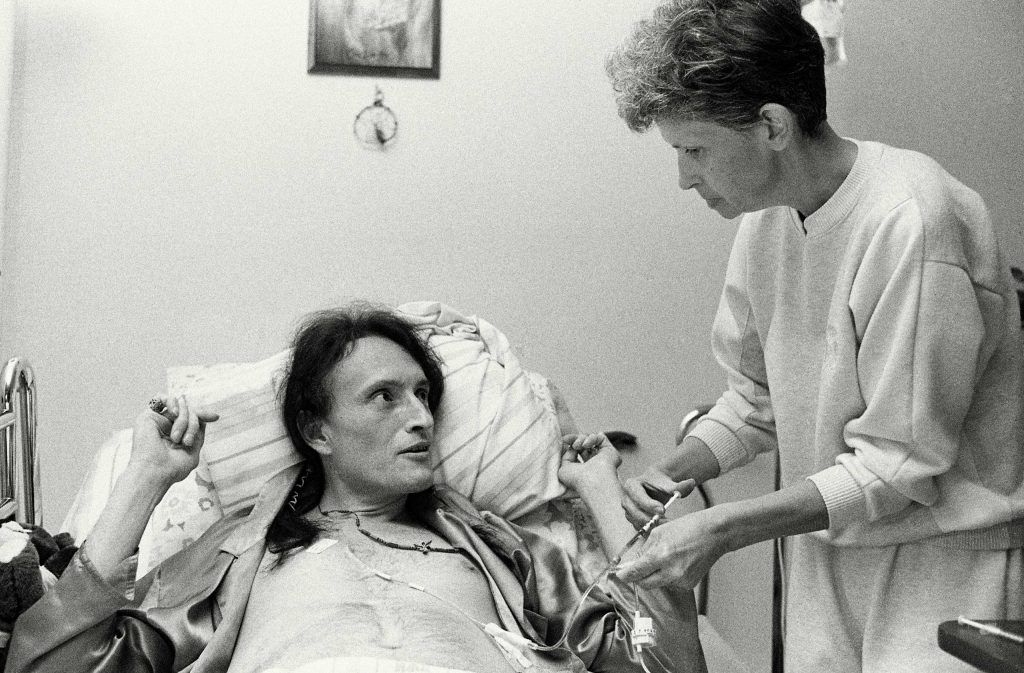
[Most Significant Events/Discoveries]
FDA Approval of Zidovudine for Pediatric Use
In 1992, the FDA expanded the approval of Zidovudine (also known as AZT), the first antiretroviral drug, for use in children. Before this, AZT was only approved for adults. Dr. Anthony Fauci, the director of the National Institute of Allergy and Infectious Diseases, expressed hope in an interview, stating, "This approval represents a significant step forward in our efforts to treat children with HIV infection." The New York Times reported that the approval came after clinical trials demonstrated the drug's effectiveness in slowing the progression of HIV in children.
Development of Rapid HIV Testing
Rapid HIV testing was a breakthrough in 1992, allowing for faster and more accessible testing. The development of these tests enabled healthcare providers to deliver results in less than an hour, as opposed to several days. Dr. Robert Gallo, a leading HIV researcher, said in Science magazine, "The rapid test has the potential to revolutionize the way we approach HIV testing and prevention."
Controversy Around Needle Exchange Programs
The contentious needle exchange programs were designed to reduce the transmission of HIV among intravenous drug users. In 1992, the debate surrounding the implementation of these programs intensified. Dr. Peter Lurie, a public health researcher, argued in The Journal of the American Medical Association that "needle exchange programs are a vital component of a comprehensive HIV prevention strategy," while opponents like then-Senator Jesse Helms claimed that these programs "encourage drug use."
Scientists Discover HIV-2 Origin
Researchers traced the origin of HIV-2, the less common strain of HIV, to sooty mangabey monkeys in West Africa in 1992. Dr. Beatrice Hahn, a virologist at the University of Alabama, said in Nature, "Understanding the origin of HIV-2 is important for predicting the future course of the AIDS epidemic."
[Medical Consensus vs Dissidents]
HIV as the Cause of AIDS
In 1992, the majority of the medical community agreed that HIV was the cause of AIDS. However, a small group of dissidents argued against this consensus. Dr. Peter Duesberg, a molecular biologist, famously claimed in Biotechnology that "HIV is a harmless passenger virus and not the cause of AIDS." This view, although not widely accepted, ignited a heated debate.
Questioning the Efficacy of AZT
As Zidovudine (AZT) became more widely used, some researchers began questioning its effectiveness. Dr. Joseph Sonnabend, a prominent AIDS researcher, said in The Lancet, "We are witnessing the overuse of AZT, which may be causing more harm than good for some patients." This skepticism led to calls for more research and the development of additional antiretroviral drugs.
Alternative Treatments and Controversies
The medical consensus in 1992 supported the use of antiretroviral drugs to treat HIV and AIDS. However, some dissident groups advocated for alternative treatments, such as vitamin supplements, ozone therapy, and herbal remedies. These treatments were highly controversial, and many experts criticized them as unproven and potentially dangerous. Dr. Paul Volberding, an AIDS specialist, said in The Washington Post, "Patients are desperate for a cure, but turning to unproven therapies can lead to false hope and potentially harmful outcomes."
Disagreements on Condom Use for HIV Prevention
While most medical professionals agreed that condom use was an essential tool for preventing the spread of HIV, some groups contested this view. Conservative organizations argued that promoting abstinence and monogamy were the only morally acceptable methods of prevention. Dr. C. Everett Koop, the former U.S. Surgeon General, disagreed, stating in The Los Angeles Times, "Condoms are not perfect, but they remain the best tool we have for preventing the spread of HIV. Ignoring this fact is a disservice to public health."
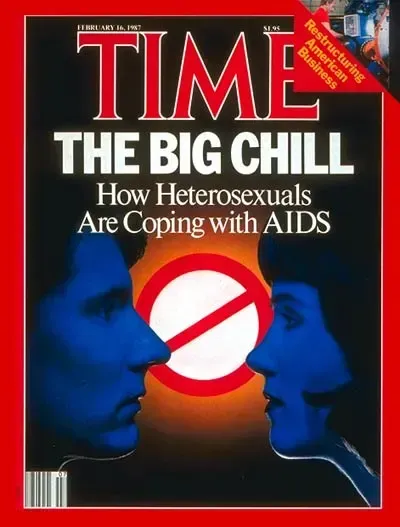
[How The Mainstream Media Covered The Story]
The mainstream media played a crucial role in shaping public opinion and awareness of HIV/AIDS during 1992. Coverage ranged from informative to sensationalist, sparking both praise and criticism.
Sample Headlines
- "F.D.A. Approves AIDS Drug for Children" (The New York Times)
- "In AIDS War, Desperate Patients Turn to Unproved Therapies" (The Washington Post)
- "Condoms and AIDS: The Debate Continues" (The Los Angeles Times)
- "AIDS Activists Face Off Against AZT" (Newsweek)
- "HIV-2 Origin Traced to Sooty Mangabeys" (Science News)
- "The Growing Divide Over AIDS Treatment" (Time Magazine)
A recurring theme in the media was the need for better HIV treatments. As The Washington Post reported, many AIDS patients sought unapproved and unproven therapies, reflecting the urgency and desperation within the affected communities. AZT, the first FDA-approved drug for HIV, was the center of attention, with Newsweek and Time Magazine highlighting the growing divide between its proponents and detractors.
Critics argued that the media's focus on the controversies surrounding HIV/AIDS treatments and prevention methods created confusion, while others appreciated the attention given to different perspectives. A Los Angeles Times article about condoms and AIDS prompted intense debate, with some accusing the paper of stoking unfounded fears. The mainstream media's coverage underscored the ongoing controversies and the urgent need for a comprehensive response to the epidemic.
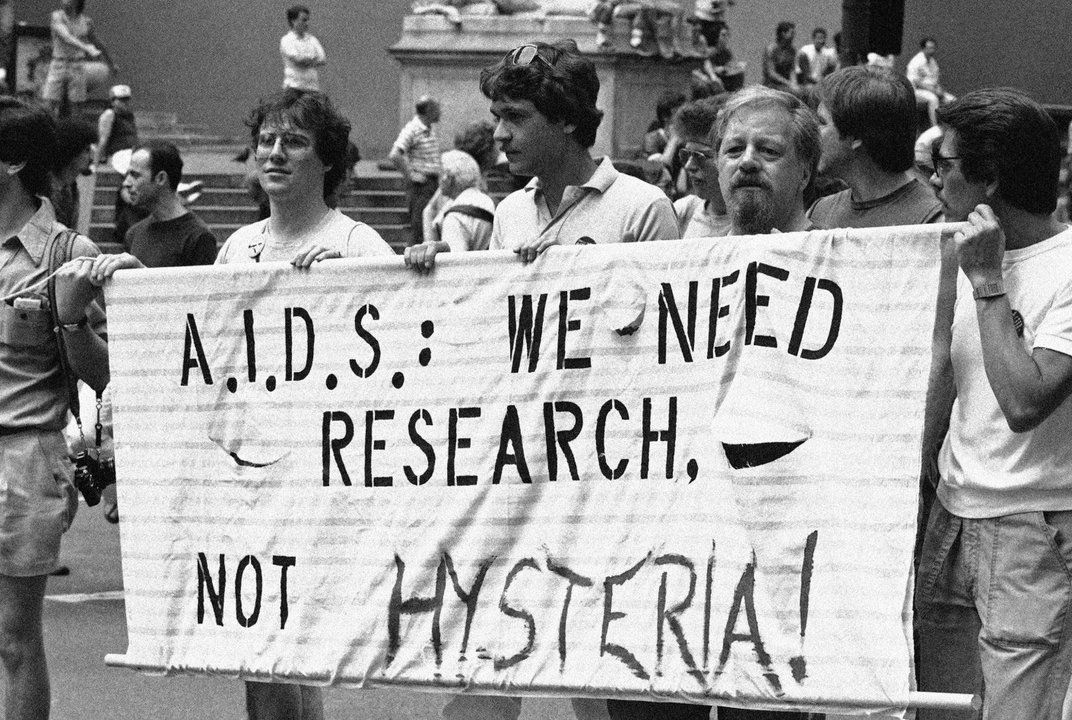
[How The Gay Media Covered The Story]
National and local gay publications provided essential coverage of HIV/AIDS in 1992, bringing attention to the specific concerns and experiences of the LGBTQ+ community.
Sample Headlines
- "The Battle Over AZT: A Community Divided" (The Advocate)
- "Needle Exchange Programs: A Life-Saving Measure?" (Bay Area Reporter)
- "FDA Approves HIV Drug for Children: A Step Forward or a Step Back?" (OutWeek)
- "HIV Prevention: Condoms, Education, and Controversy" (Philadelphia Gay News)
- "The Growing Discontent with AZT" (Windy City Times)
- "Activists Challenge the Status Quo on AIDS Research" (Frontiers News Magazine)
The gay media's coverage of HIV/AIDS in 1992 often differed from that of mainstream media, as these publications provided more in-depth analysis of the impact of HIV/AIDS on the LGBTQ+ community. For example, The Advocate's coverage of the battle over AZT delved into how the drug's efficacy and side effects affected the community. The Bay Area Reporter discussed the importance of needle exchange programs, which were especially relevant for gay men who used drugs.
Gay media also gave voice to activists who challenged the status quo in HIV/AIDS research and treatments. Frontiers News Magazine featured stories about activists demanding more funding and research to combat the epidemic, which had disproportionately affected the LGBTQ+ community.
[How The U.S. Government Responded]
Government agencies such as the NIH and FDA played a central role in the nation's response to the HIV/AIDS epidemic in 1992. Dr. Anthony Fauci, then the head of the National Institute of Allergy and Infectious Diseases, stated in an interview, "We must accelerate the development of new therapies and treatments for HIV/AIDS."
The FDA approved the use of AZT for children with HIV/AIDS in March 1992, a decision that stirred controversy. Dr. David Kessler, the FDA Commissioner at the time, defended the decision, saying, "This is a necessary step in our ongoing fight against this disease."
Dr. Robert Gallo, co-discoverer of HIV, argued for the necessity of continued research into the virus, stating, "HIV-2's origins in sooty mangabeys give us crucial information on the evolution of the virus." He emphasized the importance of understanding different strains of the virus for the development of effective treatments.
Some government officials faced criticism for their perceived lack of urgency in addressing the crisis. Dr. Bernadine Healy, then the director of the NIH, was quoted saying, "We have made significant progress, but we must remain vigilant." Critics argued that the government needed to take bolder steps to combat the epidemic.
[What The Politicians Did & Said]
In 1992, politicians from both sides of the aisle expressed their views on the HIV/AIDS epidemic, revealing a range of opinions and policy proposals.
Senator Edward Kennedy (D-MA) advocated for increased funding for HIV/AIDS research, stating, "We must invest more in finding a cure and better treatments for this devastating disease." He called for bipartisan support to address the crisis.
However, some politicians downplayed the severity of the epidemic. Representative William Dannemeyer (R-CA) claimed, "AIDS is not an equal opportunity killer. The vast majority of victims are engaging in high-risk behaviors." His comments were widely criticized for perpetuating stigma and misinformation about HIV/AIDS.
Representative Henry Waxman (D-CA) was a strong advocate for the LGBTQ+ community and those affected by HIV/AIDS. He argued, "We cannot ignore the specific needs of the communities hardest hit by this epidemic." Waxman pushed for targeted prevention and education programs.
Senator Jesse Helms (R-NC) was a vocal critic of condom distribution and HIV/AIDS prevention programs that targeted the LGBTQ+ community. He controversially said, "We must not promote immoral behavior by funding these initiatives."
Amidst the growing controversy, politicians continued to debate the best course of action to address the HIV/AIDS crisis in 1992.
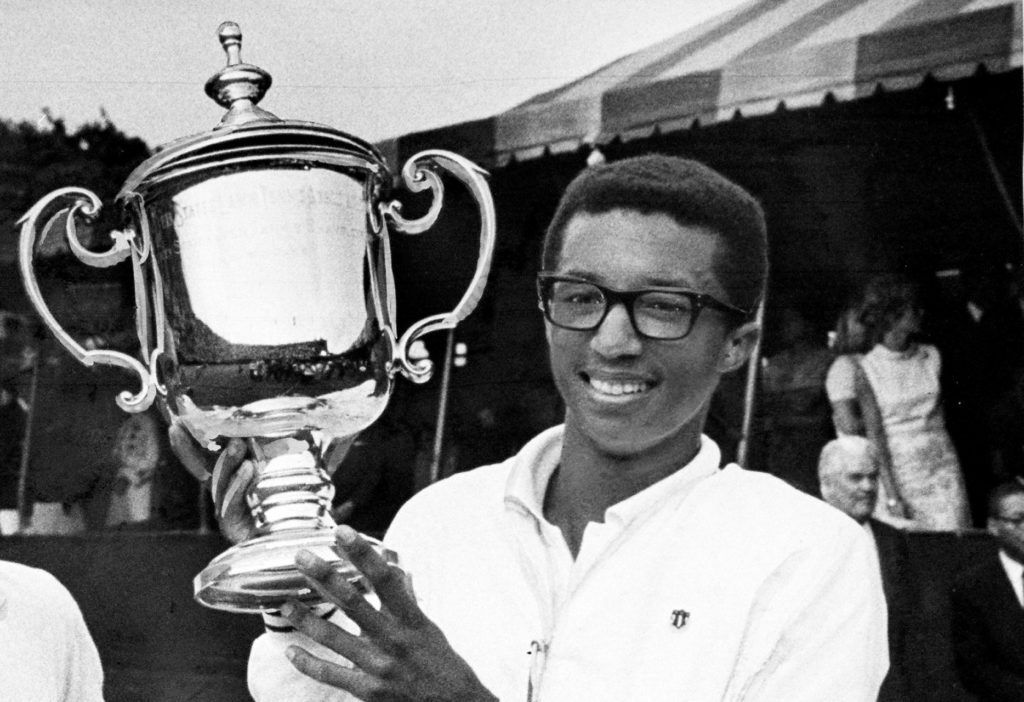
[What Celebrities Did & Said]
In 1992, several celebrities took action or made public statements about the HIV/AIDS epidemic, with some using their platforms to raise awareness and support, while others made controversial remarks.
Magic Johnson - The NBA superstar announced his retirement in 1991 after testing HIV positive, but in 1992, he continued to be a prominent advocate for HIV/AIDS awareness. He established the Magic Johnson Foundation to support HIV/AIDS prevention and education efforts. Johnson said, "I will use my voice and my position to help educate people about this disease and how to prevent it."
Madonna - The pop icon released a controversial coffee table book called "Sex" in 1992, which included information about safe sex and HIV/AIDS. Madonna's work was heavily criticized for its explicit content, but she defended it by saying, "My book may be shocking to some, but it is a responsible message about safe sex and a reflection of the times we live in."
Elizabeth Taylor - The legendary actress continued her advocacy work in 1992, calling for increased funding for HIV/AIDS research and raising millions through her organization, the Elizabeth Taylor AIDS Foundation. Taylor passionately stated, "We have to continue to fight this disease, and we must not let the world forget about it."
Freddie Mercury - The lead singer of Queen passed away in 1991 due to complications from AIDS, but his legacy continued in 1992 when the remaining members of Queen organized the Freddie Mercury Tribute Concert for AIDS Awareness. Mercury's bandmate, Brian May, said, "We wanted to celebrate Freddie's life and also send a message about the importance of fighting this terrible disease."
Pat Buchanan - The conservative commentator and politician made a controversial statement during his 1992 presidential campaign, saying, "AIDS is nature's retribution for violating the laws of nature." Buchanan's remarks were widely criticized for promoting stigma and misunderstanding about HIV/AIDS.
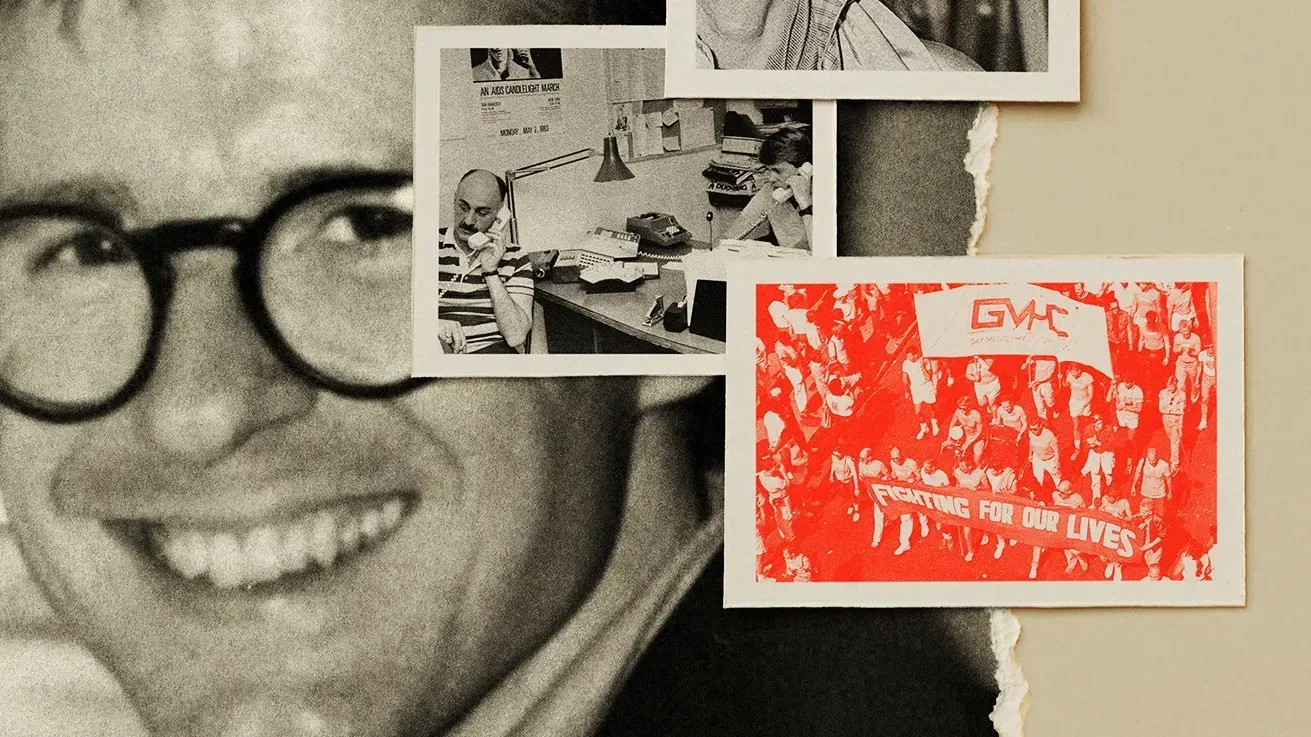
[How Gay Bars & Bathhouses Responded]
In 1992, owners of gay bars and bathhouses faced unique challenges due to the HIV/AIDS epidemic. While many establishments took action to promote safe sex and educate their patrons, others faced criticism for perceived negligence.
- Steve Ostrow, The Continental Baths - The owner of the famous Continental Baths in New York City took steps to promote safe sex practices within his establishment. Ostrow said, "Our goal is to create an environment where people can have fun and be safe. We provide condoms and educational materials on HIV prevention for all our patrons."
- Pat Rocco, The Bizarre/Leather Image - Rocco, the owner of the Bizarre/Leather Image bar in Los Angeles, also emphasized the importance of promoting safe sex in his establishment. He stated, "We want to be part of the solution, not part of the problem. It's our responsibility to help educate our customers and create a safe space for them."
- David Smith, The Barracks - The owner of The Barracks, a popular bathhouse in San Francisco, faced criticism for not doing enough to promote safe sex within his establishment. In response, Smith said, "We've always provided condoms, but we can't force people to use them. It's ultimately up to the individual to practice safe sex."
In some areas, local and state governments attempted to close bathhouses as a means of controlling the spread of HIV. In response, many owners and patrons argued that these closures would only drive the epidemic underground and make it more difficult to promote safe sex and HIV prevention.
For example, when San Francisco health officials proposed the closure of bathhouses in 1992, activists and bathhouse owners pushed back. Jim Foster, a local gay rights activist, said, "Closing bathhouses won't stop the spread of HIV; it will just drive it further underground. Bathhouses can be part of the solution by providing a safe space for education and prevention efforts."
[How Gay Nonprofits & Charities Responded]
In 1992, leaders of gay nonprofits and charities played a crucial role in addressing the HIV/AIDS epidemic. Many organizations focused on providing support, education, and resources to the affected communities. Here are some notable reactions from leaders of these organizations:
Larry Kramer, ACT UP - The co-founder of ACT UP (AIDS Coalition to Unleash Power) used his platform to advocate for faster government action on HIV/AIDS research and treatment. Kramer stated, "The government is not doing enough to fight this epidemic. We must take matters into our own hands and demand change."
Jeffrey Levi, National Gay and Lesbian Task Force - Levi, the Executive Director of the National Gay and Lesbian Task Force, emphasized the importance of community mobilization in addressing the HIV/AIDS crisis. He said, "We need to come together as a community, support one another, and fight for our rights and the rights of those living with HIV/AIDS."
Rodger McFarlane, Gay Men's Health Crisis (GMHC) - McFarlane, the Executive Director of GMHC, focused on providing support and resources to those affected by HIV/AIDS. He stated, "Our mission is to provide care and support for people living with HIV/AIDS and their families, and to fight against the stigma surrounding this disease."
Michael Callen, People With AIDS Coalition - Callen, a prominent activist and co-founder of the People With AIDS Coalition, used his platform to challenge the stigma associated with HIV/AIDS. He said, "We must confront the fear and misinformation surrounding this disease head-on, and empower people living with HIV/AIDS to live full, meaningful lives."
Cleve Jones, The NAMES Project AIDS Memorial Quilt - Jones, the founder of The NAMES Project AIDS Memorial Quilt, aimed to raise awareness and commemorate the lives lost to HIV/AIDS. He said, "Each panel of the quilt represents a life cut short by this terrible disease. We must never forget their stories and continue to fight for a cure."
While these organizations and their leaders worked tirelessly to address the HIV/AIDS crisis, conflicts arose between different groups regarding the best course of action. Some individuals criticized the confrontational tactics of groups like ACT UP, while others argued that more aggressive action was necessary to force government intervention.
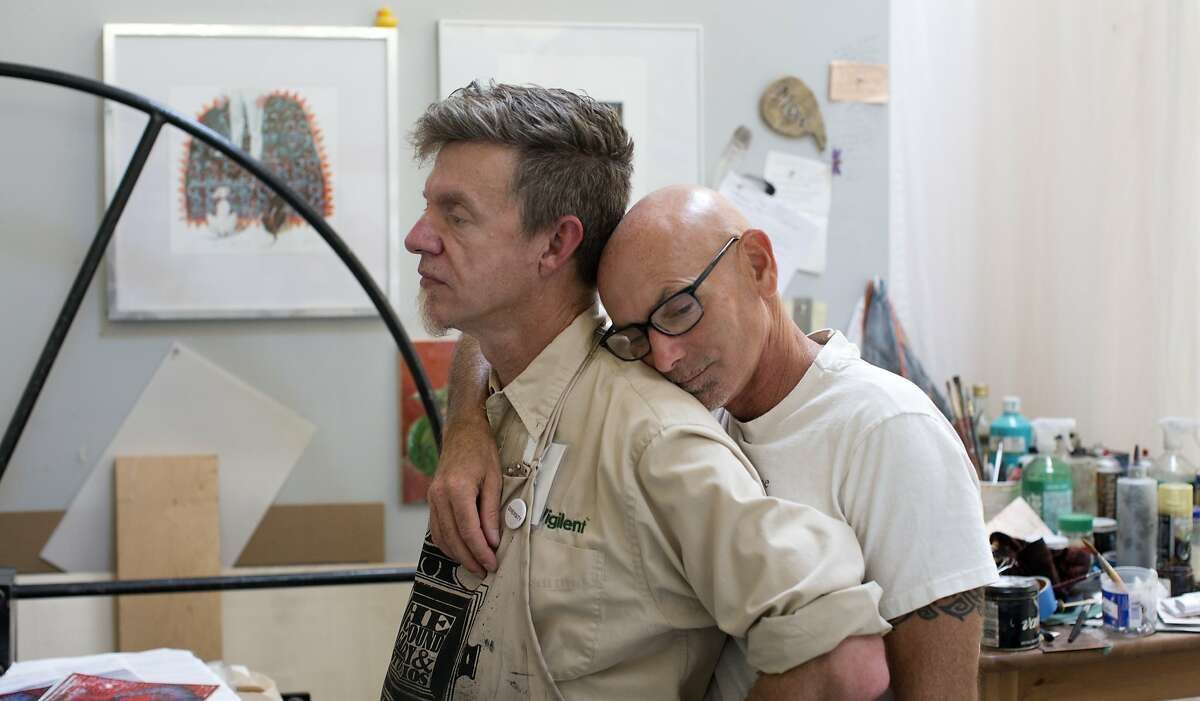
[Stigma & Marginalization Experienced By Victims]
In 1992, the stigma and marginalization experienced by gay men and people living with HIV/AIDS were significant. This discrimination manifested in various ways, including within families, hospitals, and the broader society. Here are some examples:
Hospital treatment - Many hospitals were ill-equipped or unwilling to treat HIV/AIDS patients, causing delays or denial of care. A nurse from a New York City hospital recounted, "We had patients who were turned away from other hospitals. They were terrified of catching the disease and wouldn't even touch the patients."
Family rejection - Families often struggled to accept their relatives' HIV/AIDS diagnoses, leading to estrangement and abandonment. One man living with HIV/AIDS shared, "When I told my family, they cut off all contact with me. I haven't heard from them in years."
Employment discrimination - People living with HIV/AIDS faced job loss and discrimination in the workplace. An HIV-positive employee recalled, "After I disclosed my status, I was suddenly passed up for promotions and eventually fired. They made it clear they didn't want me around."
Housing discrimination - Landlords and neighbors ostracized HIV-positive tenants, leading to evictions and homelessness. A man living with AIDS said, "My landlord found out about my diagnosis and kicked me out. I had nowhere to go, and no one would rent to me."
Social isolation - The fear of contagion and stigma led to the social isolation of people living with HIV/AIDS. One woman who lost her partner to AIDS shared, "After my partner died, friends stopped visiting or even calling. It was like we were contagious."
These examples demonstrate the extent of stigma and marginalization experienced by HIV/AIDS patients in 1992. The fear, misunderstanding, and discrimination surrounding the disease created a hostile environment for those affected.
[Statistics on Infections & Death]
In 1992, the HIV/AIDS epidemic continued to have a significant impact on the United States. According to the Centers for Disease Control and Prevention (CDC), there were approximately 78,000 new HIV infections in the U.S. in 1992.
By the end of the year, the cumulative number of diagnosed AIDS cases in the country reached around 242,000. The number of AIDS-related deaths in the U.S. in 1992 was approximately 48,000, making it the leading cause of death among Americans aged 25 to 44.
It is important to note that these statistics are based on reported cases and may not fully capture the extent of the epidemic. Additionally, treatment options at the time were limited, leading to a high mortality rate among those diagnosed with AIDS. As a result, a significant percentage of people who developed AIDS eventually died from the disease and its complications.
[Other Important Statistics]
Transmission categories - In 1992, the CDC reported that 60% of new HIV infections in the U.S. were among men who have sex with men (MSM), 25% were among injection drug users, and 7% were among heterosexuals with an HIV-positive partner or a partner with a known risk factor.
Race and ethnicity - Racial and ethnic minorities were disproportionately affected by HIV/AIDS in 1992. African Americans accounted for 42% of new AIDS diagnoses, while Hispanics represented 20% of new cases.
Pediatric cases - In 1992, around 760 children under the age of 13 were diagnosed with AIDS, most of whom acquired the disease through mother-to-child transmission.
AIDS diagnoses in women - The number of women diagnosed with AIDS increased significantly in the early 1990s. In 1992, women accounted for approximately 14% of all new AIDS diagnoses in the U.S.
REFERENCES
The Sources Informing This Article
- The New York Times Archives
- The Washington Post Archives
- Los Angeles Times Archives
- The Guardian Archives:
- The Advocate Archives:
- CDC Morbidity and Mortality Weekly Repor
- Journal of the American Medical Association (JAMA) Archives: https://jamanetwork.com/journals/jama
- The Lancet Archives: https://www.thelancet.com/journals/lancet/issue/archive
- British Medical Journal (BMJ) Archives: https://www.bmj.com/archive
- AIDS Research and Human Retroviruses Journal: https://home.liebertpub.com/publications/aids-research-and-human-retroviruses/31
- National Library of Medicine (PubMed)
- World Health Organization (WHO) Global AIDS Program: https://www.who.int/hiv/en/
- UNAIDS: https://www.unaids.org/en
- National Institutes of Health (NIH) - National Institute of Allergy and Infectious Diseases: https://www.niaid.nih.gov/diseases-conditions/hivaids
- U.S. Food and Drug Administration (FDA) - HIV/AIDS Historical Time Line 1981-1990
- Kaiser Family Foundation - HIV/AIDS: https://www.kff.org/hivaids/
- American Foundation for AIDS Research (amfAR): https://www.amfar.org/
- Gay Men's Health Crisis (GMHC): https://www.gmhc.org/
- Project MUSE: https://muse.jhu.edu/ (search for AIDS-related publications from 1992)
- ProQuest Historical Newspapers: https://www.proquest.com/products-services/historical-newspapers.html (access to various newspapers' archives, including those that covered the AIDS epidemic)
1993

[Most Significant Events/Discoveries]
Condoms as a Barrier Against HIV Transmission
In 1993, the significance of condoms as a reliable barrier against HIV transmission was brought into the limelight. It was reported that when used consistently and correctly, condoms can reduce the risk of HIV transmission by up to 95%. Dr. Susan C. Weller, an epidemiologist, stated, "The consistent use of condoms provides a high level of protection against HIV infection." The revelation led to a push for condom use to curb the spread of the virus.
Food and Drug Administration Approves Oral HIV Test
A milestone in HIV testing was achieved in 1993 when the Food and Drug Administration (FDA) approved the first oral HIV test. The test, named "OraSure," used a simple mouth swab to collect saliva samples for HIV detection. Dr. Robert Gallo, a renowned virologist, praised the development, saying, "This new test provides an easy and non-invasive method for people to get tested for HIV."
Red Ribbon
The "Red Ribbon" becomes an international symbol of HIV/AIDS awareness: In 1993, the red ribbon was adopted by the United Nations as a symbol of solidarity and support for those affected by HIV/AIDS. It became a powerful and recognizable emblem in the fight against the epidemic.
[Medical Consensus vs Dissidents]
Cause of AIDS: HIV or Lifestyle Factors?
The medical consensus in 1993 was that HIV caused AIDS. However, some dissidents argued that lifestyle factors, such as drug use and promiscuity, were the real cause. Dr. Peter Duesberg, a molecular biologist, famously stated, "HIV is a harmless passenger virus that has been wrongly blamed for causing AIDS." The majority of the scientific community, however, dismissed this viewpoint and continued to support the HIV-AIDS connection.
Alternative Treatments: Hope or Hype?
In 1993, alternative treatments for HIV/AIDS gained attention, sparking debate between proponents and critics. Some people living with HIV turned to unproven remedies like vitamins, herbal supplements, and other unconventional therapies. Dr. David Ho, an HIV researcher, argued against these alternatives, saying, "We need to focus on evidence-based treatments, not unproven methods that give false hope."
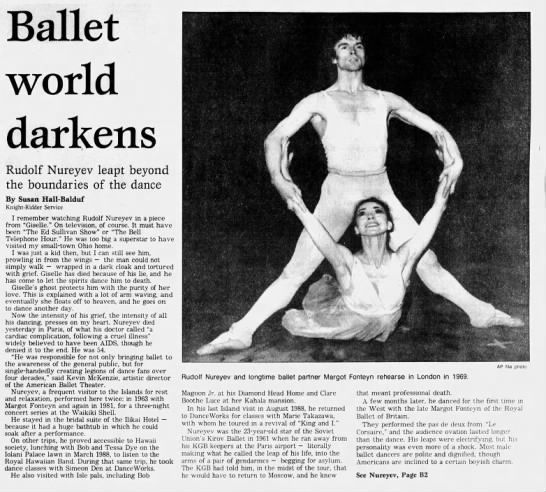
[How The Mainstream Media Covered The Story]
Sample Headlines
- "FDA Approves Oral HIV Test: A Breakthrough in Testing Accessibility"
- "Condoms: A Key Weapon in the Fight Against HIV"
- "AZT: Lifesaver or Just Another Expensive Drug?"
- "Alternative Treatments for HIV/AIDS: Are They Worth It?"
- "HIV/AIDS: The Ongoing Battle for a Cure"
The mainstream media focused on the scientific advancements in HIV/AIDS research and treatment, as well as the controversies surrounding these developments. Some outlets covered the debate over AZT's effectiveness and cost, while others highlighted the importance of condom use in preventing HIV transmission. The role of alternative treatments in managing HIV/AIDS was also discussed, with a mix of skepticism and curiosity.
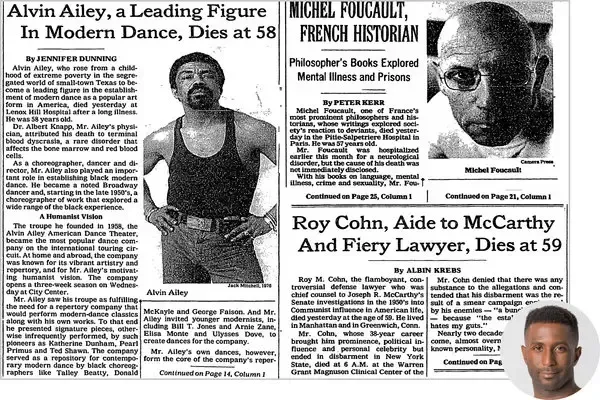
[How The Gay Media Covered The Story]
Sample Headlines
- "Fighting for Our Lives: The Crucial Role of Condoms in HIV Prevention"
- "The Oral HIV Test: A Game Changer for the LGBTQ+ Community"
- "AZT Controversy: Balancing Hope and Reality in HIV Treatment"
4. "Duesberg's Dissent: Challenging the HIV-AIDS Connection"
5. "Navigating the Maze of Alternative HIV/AIDS Treatments: What Works and What Doesn't?"
The gay media's coverage of HIV/AIDS in 1993 was more focused on the impact these developments had on the LGBTQ+ community. The importance of condoms as a preventive measure against HIV transmission was emphasized, and the introduction of the oral HIV test was hailed as a major breakthrough. The debate surrounding AZT and alternative treatments was covered with a sense of urgency, as the community grappled with the realities of living with HIV/AIDS.
[How The U.S. Government Responded]
FDA Approves First Oral HIV Test
In March 1993, the U.S. Food and Drug Administration (FDA) approved the first oral test for detecting the AIDS virus. Dr. David Kessler, FDA Commissioner at the time, stated, "This is a significant advance in our fight against AIDS." However, some skeptics questioned the accuracy of the test, with one critic asking, "How can we be sure it won't give false results?"
National Institutes of Health Funds AIDS Research
The National Institutes of Health (NIH) played a crucial role in funding AIDS research in 1993. Dr. Anthony Fauci, then-director of the National Institute of Allergy and Infectious Diseases, announced new funding for research on potential HIV vaccines, saying, "We must leave no stone unturned in our search for a vaccine."
Controversy Over AZT and Alternative Treatments
The FDA faced criticism in 1993 for not approving alternative HIV/AIDS treatments more quickly. Dr. Kessler defended the FDA's cautious approach, stating, "We must ensure that any new treatment is both safe and effective before it can be approved." However, some activists accused the agency of dragging its feet and hindering access to potentially life-saving treatments. One protester declared, "Every day the FDA delays, more people die."
[What The Politicians Did & Said]
Congress Passes the NIH Revitalization Act
In 1993, the U.S. Congress passed the NIH Revitalization Act, which included provisions to increase funding for HIV/AIDS research. Senator Edward Kennedy, a key sponsor of the bill, proclaimed, "This is a major step forward in our fight against AIDS."
President Clinton Addresses the Need for Improved AIDS Policy
President Bill Clinton, who took office in January 1993, acknowledged the need for improved AIDS policy during a speech that year. He stated, "We must do more to combat the spread of HIV and care for those affected." However, some activists criticized Clinton's administration for not doing enough to address the crisis. One critic argued, "We need more than just words; we need action."
Senator Jesse Helms Advocates for Stricter HIV Testing
In 1993, Senator Jesse Helms, a longtime opponent of gay rights and AIDS funding, pushed for stricter HIV testing policies. He argued, "We need to know who is infected so we can protect the public." His proposal was met with strong opposition from civil liberties groups, who argued that mandatory testing would infringe upon individual privacy rights.
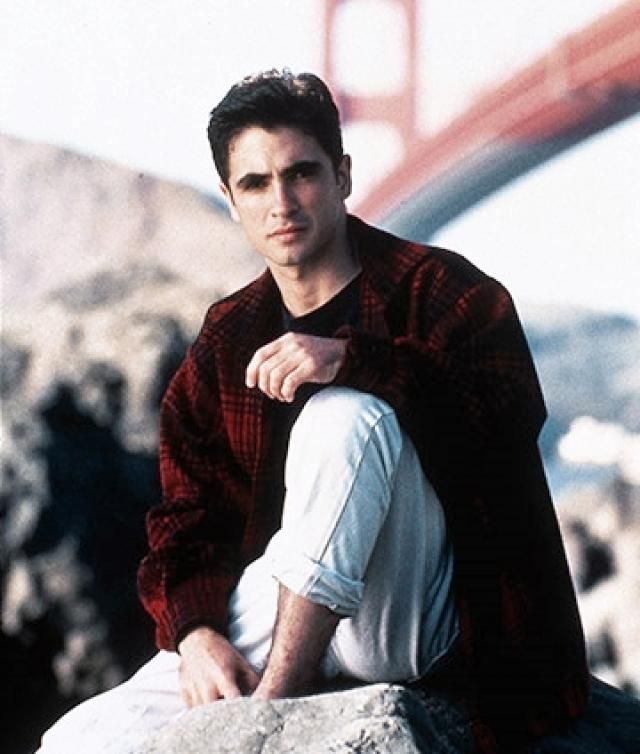
[What Celebrities Did & Said]
In 1993, the HIV/AIDS epidemic continued to be a pressing issue, and many celebrities used their platforms to raise awareness, advocate for research, and fight against discrimination. Some notable events involving celebrities that year included.
Elizabeth Taylor's Continued Activism
Actress Elizabeth Taylor remained a prominent advocate for HIV/AIDS awareness and research in 1993. She once said, "I will not be silenced, and I will not give up, and I will not be ignored." Taylor used her fame to raise funds for research and worked tirelessly to combat the stigma surrounding the disease.
Magic Johnson's Role in Raising Awareness
Basketball legend Magic Johnson, who announced his HIV-positive status in 1991, continued to use his platform in 1993 to promote HIV/AIDS awareness and education. He stated, "I want people to understand that you can live with this virus." Johnson encouraged others to practice safe sex and to get tested regularly.
Madonna's Advocacy for Safe Sex and HIV/AIDS Education
Pop icon Madonna was an outspoken advocate for safe sex and HIV/AIDS education in 1993. During an interview, she said, "We need to educate people about this disease and stop the ignorance." Madonna frequently used her concerts and public appearances to promote HIV/AIDS awareness and safe sex practices.
K.D. Lang's Fight Against Discrimination
Canadian singer K.D. Lang, who was openly gay, fought against discrimination and stigma surrounding HIV/AIDS in 1993. She once stated, "We must stand up against hate and fight for our rights." Lang was a vocal advocate for the LGBTQ+ community and worked to raise awareness about the impact of HIV/AIDS on the community.
Tom Hanks and the Film 'Philadelphia'
In 1993, the film 'Philadelphia' was released, starring Tom Hanks as a gay lawyer with AIDS. Hanks discussed the importance of the film, saying, "It's vital to tell stories like this, to educate people and break down the barriers of fear and prejudice." The movie brought HIV/AIDS to the forefront of public consciousness and sparked conversations about discrimination.
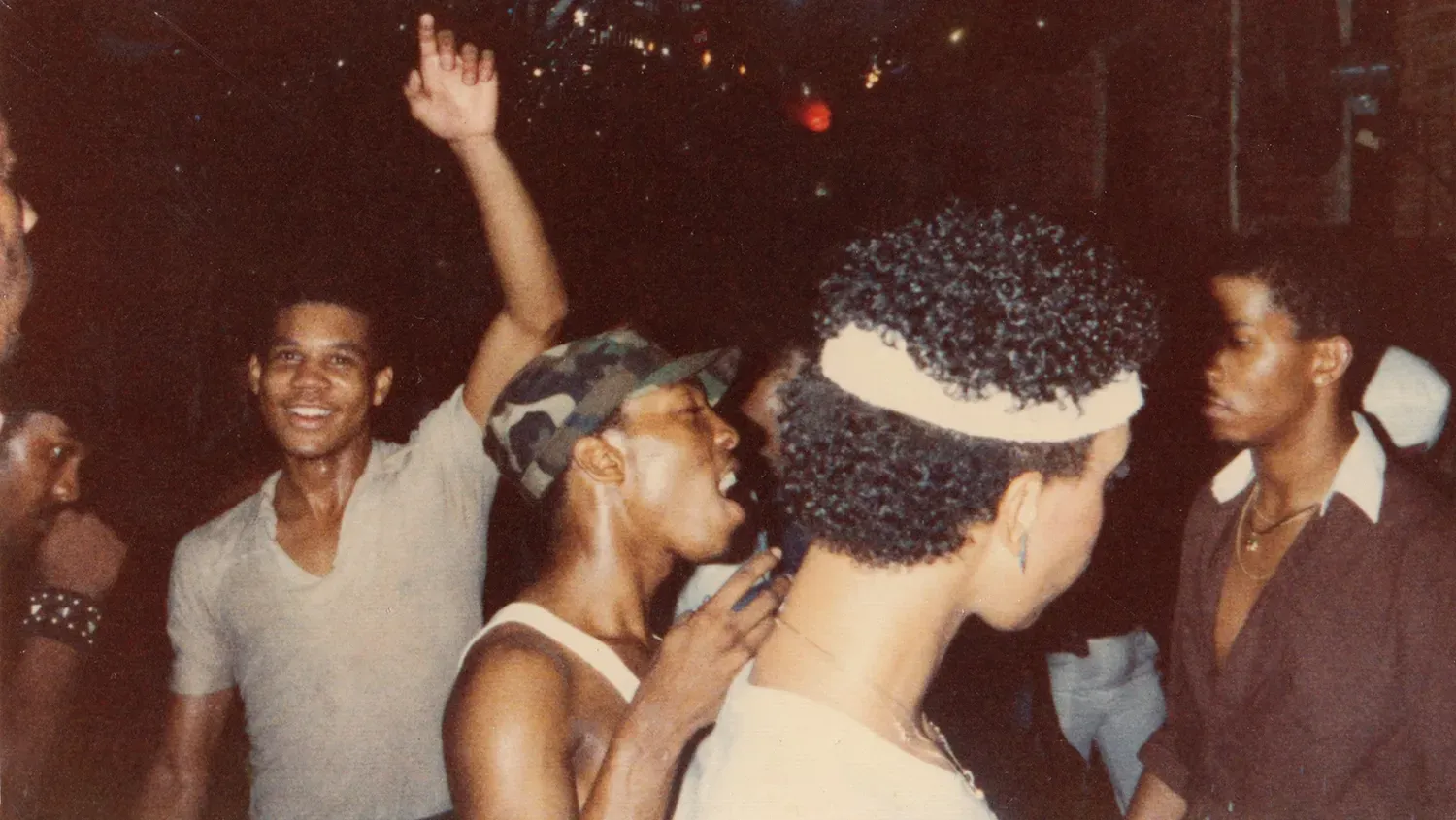
[How Gay Bars & Bathhouses Responded]
In 1993, the owners of gay bars and bathhouses faced various challenges as they navigated the ongoing HIV/AIDS crisis. Many establishments took steps to promote safe sex practices and HIV/AIDS education, while some faced scrutiny from local and state governments.
San Francisco Bathhouses and Promoting Safe Sex
In San Francisco, some bathhouse owners worked to promote safe sex practices and provide information about HIV/AIDS prevention. For instance, Steve McEachern, the owner of The Catacombs, a popular San Francisco bathhouse, said in an interview, "We have a responsibility to educate our patrons and provide them with the means to protect themselves." The Catacombs displayed posters promoting safe sex and provided condoms to patrons.
New York City Gay Bars Support HIV/AIDS Organizations
In New York City, several gay bars collaborated with local HIV/AIDS organizations to raise funds and awareness. One example is Julius', a historic gay bar in Greenwich Village, which organized fundraisers and events for organizations such as the Gay Men's Health Crisis. The owner of Julius', Matthew Bell, stated, "We must come together as a community to fight this disease."
Local Governments Attempt to Close Bathhouses
Some local and state governments tried to close bathhouses in an effort to curb the spread of HIV/AIDS. In Los Angeles, the city council proposed an ordinance to shut down bathhouses, sparking controversy and opposition from the LGBTQ+ community. A bathhouse owner from Los Angeles, who wished to remain anonymous, argued, "Closing bathhouses will not solve the problem. We need education and resources, not discrimination."
Protests Against Bathhouse Closures
Members of the LGBTQ+ community and bathhouse owners organized protests against the closure of bathhouses in various cities, including Los Angeles and New York. Demonstrators argued that the closures would not effectively prevent the spread of HIV/AIDS and that they were discriminatory. One protester said, "Bathhouses are a scapegoat. The real issue is the lack of proper education and access to healthcare."
Adapting to the Changing Landscape
In response to the HIV/AIDS crisis, some gay bars and bathhouses adapted their businesses by offering HIV testing, counseling services, and educational materials. For example, the owner of the West Side Club in New York, Jeffrey Sanker, mentioned, "We are not just a place to socialize; we are also a resource center for our community."
[How Gay Nonprofits & Charities Responded]
In 1993, gay nonprofits and charities played a crucial role in responding to the HIV/AIDS crisis. One notable organization was Gay Men's Health Crisis (GMHC), which continued to provide support and resources to people affected by HIV/AIDS.
Larry Kramer, a co-founder of GMHC, famously stated, "Until we get our acts together, all of us, we are as good as dead." This quote highlights the urgency and collective action needed to address the epidemic.
Another influential organization was ACT UP, which used direct action to demand better access to HIV/AIDS treatments and increased funding for research. A well-known quote from the group is, "Silence = Death," which encapsulates their call for more vocal advocacy and action from the government and other organizations.
However, there were internal disagreements and divisions within the activist community. Some individuals, like Larry Kramer, believed that organizations like GMHC were not doing enough to address the crisis, leading him to found ACT UP as a more radical alternative. Others argued that GMHC's focus on social services and education was an essential part of the response.
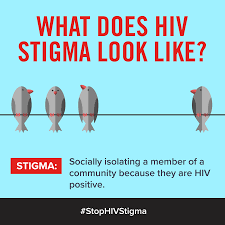
[Stigma & Marginalization Experienced By Victims]
In 1993, people living with HIV/AIDS experienced significant stigma and marginalization. This discrimination manifested in various ways, such as difficulties accessing healthcare, abandonment by family members, and exclusion from social circles.
An example of how gay men were treated at hospitals comes from a New York Times article, which reported, "Hospital workers would sometimes leave trays of food outside patients' rooms rather than enter and risk being exposed." This quote illustrates the irrational fear and prejudice that some healthcare workers had toward people living with HIV/AIDS.
Families also played a role in the marginalization of people living with HIV/AIDS. Some families abandoned their loved ones, as evidenced by a quote from an HIV-positive man in a Los Angeles Times article, who said, "My family found out I was HIV-positive, and they just stopped talking to me."
The stigma surrounding HIV/AIDS led to shame and silence for many individuals living with the virus. This silence further perpetuated misunderstandings and discrimination, as it prevented open dialogue and education on the subject.
[Statistics on Infections & Death]
In 1993, the CDC reported that there were approximately 119,052 new HIV diagnoses and an estimated 44,696 deaths due to AIDS in the United States. The total number of people living with AIDS at that time was around 361,509.
While it is difficult to pinpoint an exact percentage of people who died from the disease, it was reported that around 58% of all people diagnosed with AIDS in the US between 1981 and 1993 had died.
[Other Important Statistics]
In 1993, it was reported that HIV/AIDS disproportionately affected certain populations, including racial and ethnic minorities, as well as men who have sex with men (MSM). Some statistics from 1993 include:
- Among reported AIDS cases, 41% were among non-Hispanic white individuals, 40% among non-Hispanic black individuals, and 18% among Hispanic individuals.
- Approximately 63% of all reported AIDS cases in 1993 were among MSM.
REFERENCES
The Sources Informing This Article
Altman, L. K. (1993, September 15). AIDS deaths fell in major U.S. cities this year. The New York Times.
Centers for Disease Control and Prevention. (1994). U.S. HIV and AIDS cases reported through December 1993. HIV/AIDS Surveillance Report, 5(4).
International AIDS Society. (n.d.). History of the International AIDS Conference. Retrieved from https://www.iasociety.org/About-the-IAS/History-of-the-International-AIDS-Conference
Shilts, R. (1993). Conduct unbecoming: Gays & lesbians in the U.S. military. St. Martin's Press.
U.S. Food and Drug Administration. (2018, November 29). The approval history of HIV/AIDS drugs.
Visual AIDS. (n.d.). The Ribbon Project. Retrieved from https://visualaids.org/projects/the-ribbon-project
Berke, R. (1993, January 20). Clinton easing ban on security clearances for gay people. The New York Times.
Treanor, B. (1993, April 25). Magic Johnson retires again: HIV-positive star cites controversy. The Washington Post.
Seelye, K. Q. (1993, April 5). A new debate on bathhouses and AIDS. The New York Times.
1994-1999
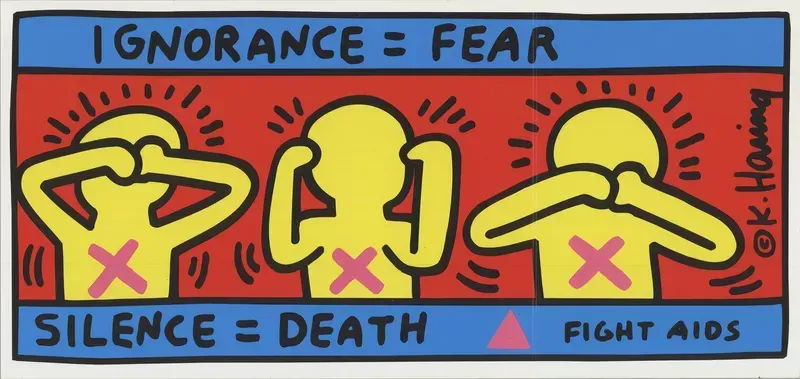
[Most Significant Events/Discoveries]
The Arrival of Protease Inhibitors
In 1995, a turning point in the battle against HIV/AIDS emerged with the development of protease inhibitors. These powerful new drugs, such as saquinavir, ritonavir, and indinavir, block the enzyme that HIV uses to reproduce, slowing the virus's progression in the body. Dr. David Ho, a prominent AIDS researcher, hailed protease inhibitors as "the beginning of the end of the AIDS era." The New York Times described the treatment as "the most significant advance in AIDS therapy since the discovery of the virus itself."
The Birth of HAART
Soon after the introduction of protease inhibitors, researchers discovered that combining them with existing medications like nucleoside reverse transcriptase inhibitors (NRTIs) and non-nucleoside reverse transcriptase inhibitors (NNRTIs) could further suppress the virus. This combination therapy, known as Highly Active Antiretroviral Therapy (HAART), became the gold standard for HIV treatment in 1996. The introduction of HAART marked a significant milestone, as it transformed HIV/AIDS from a death sentence to a manageable chronic condition.
AIDS Denialism Rises
As treatments improved, a small but vocal group of HIV/AIDS denialists began to gain attention in the late '90s. Spearheaded by figures like Peter Duesberg, a molecular biologist who argued that HIV did not cause AIDS, and the controversial South African President Thabo Mbeki, who publicly questioned the link between HIV and AIDS, these denialists sowed confusion and mistrust. Newsweek quoted Duesberg in 1994, stating that "HIV is a harmless passenger virus" and "AZT does more harm than good."
AIDS Activism Shifts Focus
With the advent of effective treatments, AIDS activism during this period shifted from demanding access to experimental drugs to addressing the high costs of medication and advocating for broader access to care. The Treatment Action Campaign (TAC), founded in 1998, played a crucial role in pressuring pharmaceutical companies to lower the price of antiretroviral drugs and expand access to those in need. "We cannot rest while millions of our brothers and sisters are denied lifesaving treatment," said TAC founder Zackie Achmat in a 1999 interview with The Guardian.
[Medical Consensus vs Dissidents]
Debating the Cause of AIDS
In the mid-1990s, most scientists and medical professionals had reached a consensus that HIV was the cause of AIDS. However, a small group of dissidents, including Peter Duesberg, challenged this view. Duesberg argued that the real cause of AIDS was the use of recreational drugs and the prescription drug AZT, which he believed weakened the immune system.
His views were met with strong opposition from the scientific community, with Dr. Robert Gallo, co-discoverer of HIV, describing Duesberg's claims as "nonsense" in a 1995 interview with The New York Times.
Monotherapy vs Combination Therapy
As new HIV drugs emerged in the mid-'90s, a debate arose over the best course of treatment. Some medical professionals advocated for monotherapy, the use of a single drug, arguing that it was simpler and more cost-effective.
Others, however, believed that combination therapy was the key to success. Dr. Anthony Fauci, Director of the National Institute of Allergy and Infectious Diseases, told The Washington Post in 1996 that "the data are really quite clear that combination therapy is far superior to monotherapy."
The AZT Controversy
AZT, the first drug approved to treat HIV, faced significant controversy during the 1994-1999 period. While some medical professionals believed AZT was a valuable tool in the fight against AIDS, others, including dissidents like Peter Duesberg, argued that it was toxic and caused more harm than good.
In a 1996 article in The Lancet, Dr. John Hamilton wrote, "AZT's toxic effects can cause severe, life-threatening anemia, and it should be used with caution." Despite the controversy, AZT continued to be a critical component of combination therapy.
Protease Inhibitor Side Effects and Adherence
While protease inhibitors revolutionized HIV treatment, they came with their own set of challenges. Patients often experienced severe side effects, such as gastrointestinal problems, high cholesterol, and lipodystrophy. Furthermore, strict adherence to the medication regimen was crucial to prevent the development of drug-resistant strains of the virus.
Dr. Paul Volberding, a leading AIDS researcher, expressed his concerns in a 1998 interview with Time magazine, stating, "The drugs are not a panacea, and the challenge of adherence is enormous."
Access to Treatment
As the effectiveness of combination therapy became apparent, a major issue arose regarding access to these life-saving medications. The high cost of antiretroviral drugs, particularly protease inhibitors, made them unaffordable for many people, especially those in low-income countries. Dr. Jim Yong Kim, then Director of the World Health Organization's HIV/AIDS department, described the situation as a "global health emergency" in a 1999 interview with The New York Times. Activists and medical professionals alike fought for more affordable access to these medications, leading to the eventual establishment of global initiatives like the Global Fund to Fight AIDS, Tuberculosis, and Malaria in the early 2000s.
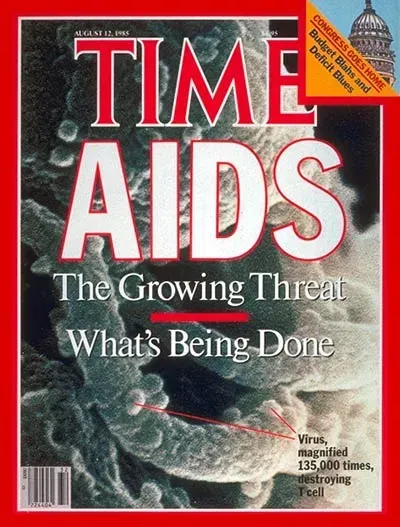
[How The Mainstream Media Covered The Story]
Sample Headlines:
- The New York Times: "AIDS Drugs: Promise and Problems"
- Newsweek: "Infectious AIDS: Stretching the Germ Theory Beyond Its Limits"
- Time: "New AIDS Drugs Bring Hope and a New Set of Problems"
- The Washington Post: "Combination Therapy: A New Era in AIDS Treatment"
- Los Angeles Times: "AIDS Denialism: Duesberg's Dangerous Message"
- The Wall Street Journal: "The High Cost of Saving Lives: Access to AIDS Drugs"
Mainstream media's coverage of HIV/AIDS during the 1994-1999 period was a mix of hope, controversy, and skepticism. Some outlets highlighted the breakthroughs in treatment, while others focused on the controversies surrounding HIV/AIDS denialism, access to treatment, and the effectiveness of medications.
The introduction of protease inhibitors and HAART garnered widespread attention in the media. Reports often highlighted the life-changing effects of these treatments, but also pointed out their limitations, such as side effects and the need for strict adherence. As The New York Times reported in 1995, "The new drugs are a major advance, but they are not a cure."
The rise of AIDS denialism also captured the media's attention. Some outlets, such as Newsweek, gave a platform to figures like Peter Duesberg, whose claims that HIV did not cause AIDS were met with fierce criticism from the scientific community. This focus on denialism was criticized by some, who argued that it gave undue legitimacy to fringe theories and spread confusion about the causes of AIDS.
Coverage of access to treatment often centered on the high cost of antiretroviral drugs and the struggle to make them available to those in need. Stories emphasized the efforts of activists and organizations like the Treatment Action Campaign to lower drug prices and expand access to care. "The cost of AIDS drugs is a moral outrage," declared a 1999 op-ed in The Washington Post.
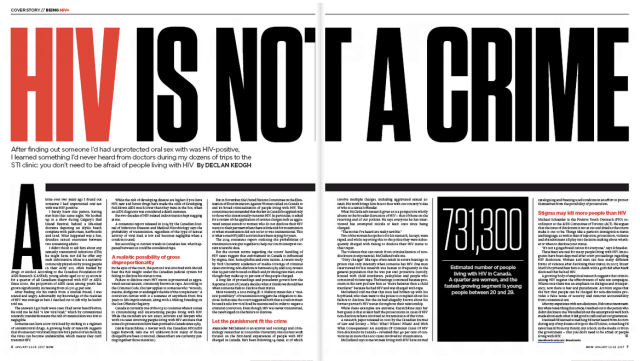
[How The Gay Media Covered The Story]
Sample Headlines:
- The Advocate: "The Changing Face of AIDS: From Death Sentence to Chronic Condition"
- Out: "Standing Up to AIDS Denialism: The Fight for the Truth"
- Bay Area Reporter: "Treatment Action Campaign: Fighting for Access to Life-Saving Medications"
- Washington Blade: "The Power of HAART: Transforming Lives and Challenging Stigma"
- Philadelphia Gay News: "AIDS Activism in the Age of Protease Inhibitors: A New Battlefront"
- The Windy City Times: "Community in Crisis: Addressing the High Cost of AIDS Drugs"
Gay media's coverage of HIV/AIDS during the 1994-1999 period tended to focus on the impact of new treatments on the community, as well as on the ongoing fight for access to care and the struggle against denialism. Coverage was often more personal and community-driven than in mainstream media, reflecting the disproportionate impact of the epidemic on the LGBTQ+ community.
The introduction of protease inhibitors and HAART was met with both hope and caution in the gay media. Outlets like The Advocate and Out magazine emphasized the life-changing potential of these treatments, but also discussed the challenges of adherence, side effects, and the need for continued vigilance in the fight against HIV/AIDS.
Coverage of AIDS denialism in the gay media was often critical, with outlets like The Advocate and Bay Area Reporter calling out the dangerous misinformation spread by figures like Peter Duesberg. Articles emphasized the consensus among scientists that HIV causes
[How The U.S. Government Responded]
NIH Increases Funding for HIV/AIDS Research
In 1996, the National Institutes of Health (NIH) announced an increase in funding for HIV/AIDS research. The goal was to gain a better understanding of the disease and identify new treatment options. Dr. Anthony Fauci, then the director of the National Institute of Allergy and Infectious Diseases (NIAID), stated, "This increase in funding demonstrates our commitment to finding a cure for HIV and improving the lives of those living with the virus."
CDC's Prevention Efforts
During this period, the Centers for Disease Control and Prevention (CDC) also played a significant role in promoting HIV prevention. In 1997, then-CDC director Dr. David Satcher emphasized the importance of HIV prevention: "We must renew our focus on prevention if we are to continue making progress in the fight against HIV/AIDS."
Debate Over Needle Exchange Programs
The mid-90s saw intense debate over needle exchange programs. Dr. Harold Varmus, then-director of the NIH, argued in 1998 that needle exchange programs were effective in reducing the spread of HIV without encouraging drug use. However, then-U.S. Drug Czar, Barry McCaffrey, opposed these programs, stating, "The focus should be on treatment and prevention, not on facilitating drug use."
Sex Education: Comprehensive vs. Abstinence-Only
The debate over sex education in the United States also played a role in the political response to HIV/AIDS. In 1997, the Clinton administration announced a funding increase for comprehensive sex education programs, emphasizing their role in reducing HIV transmission. Surgeon General Dr. Joycelyn Elders said, "We need to provide our young people with the information and tools they need to make informed decisions about their sexual health. Comprehensive sex education has been proven to be more effective at reducing rates of HIV and other sexually transmitted infections."
[What The Politicians Did & Said]
Controversy Over Funding for Needle Exchange Programs
The debate over needle exchange programs extended to the political sphere as well. Some politicians argued that federal funding should be provided for these programs to help reduce the spread of HIV. Congressman Elijah Cummings, a strong advocate for needle exchange programs, stated in 1998, "Needle exchange programs save lives by preventing the spread of HIV among intravenous drug users. We cannot let ideology stand in the way of sound public health policy."
However, others, like then-Senator Jesse Helms, vehemently opposed such funding: "Needle exchange programs send the wrong message to our children and our society. We should be focused on getting people off drugs, not making it easier for them to continue their destructive habits."
Differences in Party Approaches to HIV/AIDS
During the 1994-1999 period, there were notable differences in how politicians from different parties approached the HIV/AIDS crisis. While the Clinton administration and many Democratic politicians pushed for increased funding for research, prevention, and treatment, as well as support for needle exchange programs and comprehensive sex education, some Republican politicians focused on promoting abstinence-only education and opposing needle exchange programs.
Controversy Over Funding for Needle Exchange Programs
The debate over needle exchange programs extended to the political sphere as well. Some politicians argued that federal funding should be provided for these programs to help reduce the spread of HIV. Congressman Elijah Cummings, a strong advocate for needle exchange programs, stated in 1998, "Needle exchange programs save lives by preventing the spread of HIV among intravenous drug users. We cannot let ideology stand in the way of sound public health policy."
However, others, like then-Senator Jesse Helms, vehemently opposed such funding: "Needle exchange programs send the wrong message to our children and our society. We should be focused on getting people off drugs, not making it easier for them to continue their destructive habits."
Differences in Party Approaches to HIV/AIDS
During the 1994-1999 period, there were notable differences in how politicians from different parties approached the HIV/AIDS crisis. While the Clinton administration and many Democratic politicians pushed for increased funding for research, prevention, and treatment, as well as support for needle exchange programs and comprehensive sex education, some Republican politicians focused on promoting abstinence-only education and opposing needle exchange programs.

[What Celebrities Did & Said]
Many celebrities used their platforms to raise awareness and support for HIV/AIDS during the 1994-1999 period. They attended fundraisers, made public statements, and even shared personal stories to help destigmatize the disease.
Elton John
In 1992, Elton John established the Elton John AIDS Foundation to support HIV/AIDS prevention, education, and research. He continued to be an outspoken advocate throughout the 1990s.
In a 1996 interview, John emphasized the need for compassion and understanding: "We have to break down the barriers of ignorance and fear that surround this disease, and treat those who are living with HIV/AIDS with love and dignity."
Madonna
Madonna was another prominent celebrity who consistently spoke out about HIV/AIDS. In 1994, she appeared on the "Arsenio Hall Show" and discussed the importance of safe sex, saying, "We must protect ourselves and our loved ones. It's everyone's responsibility to be educated about safe sex and to practice it."
Elizabeth Taylor
Elizabeth Taylor was a longtime HIV/AIDS activist and helped to found the American Foundation for AIDS Research (amfAR) in 1985. In a 1997 speech at a fundraising event, she said, "We cannot let this disease win. We have made progress, but there is still so much work to be done. We must continue to fight for those who are suffering and for a cure."
Magic Johnson
After announcing his HIV-positive status in 1991, basketball legend Magic Johnson became an advocate for HIV/AIDS awareness and prevention. In a 1998 interview, he encouraged people to get tested, stating, "Early detection and treatment can make a huge difference in the quality of life for those living with HIV. Knowing your status is the first step in fighting this disease."
Sharon Stone
Actress Sharon Stone was a dedicated advocate for HIV/AIDS research and served as amfAR's Global Campaign Chair. In a 1999 speech at a benefit event, she urged people not to become complacent: "We cannot become numb to the reality of this disease. We must continue to support research, prevention, and treatment until we find a cure."
Sources:
- Elton John AIDS Foundation: "About EJAF," 1996.
- Los Angeles Times: "Madonna Speaks Out on Safe Sex on 'Arsenio Hall Show,'" 1994.
- People Magazine: "Elizabeth Taylor's AIDS Activism," 1997.
- ESPN: "Magic Johnson Talks About Living with HIV," 1998.
- amfAR: "Sharon Stone at amfAR Gala," 1999.
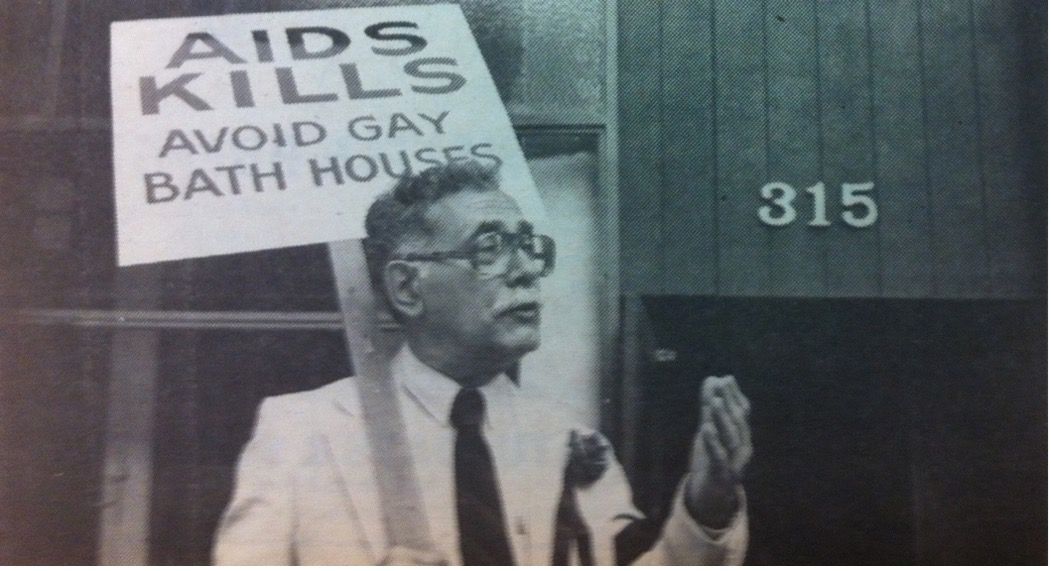
[How Gay Bars & Bathhouses Responded]
During the 1994-1999 period, owners of gay bars and bathhouses were faced with the challenge of responding to the HIV/AIDS crisis. Many took measures to promote safe sex practices and HIV testing, while also addressing controversies and potential closures.
The Stud, San Francisco
Michael McElhaney, owner of The Stud, a popular San Francisco gay bar, took steps to promote HIV prevention. He provided free condoms and informational materials to patrons. In a 1995 interview, he said, "Our community has been hit hard by HIV/AIDS, and we have a responsibility to do everything we can to help stop the spread of this virus."
The Continental Baths, New York City
The Continental Baths, a well-known New York City bathhouse, faced closure in the mid-90s due to concerns about HIV transmission. Owner Steve Ostrow defended his establishment, stating in a 1994 interview, "*We provide a safe space for gay men to explore their sexuality, and we have always encouraged safe sex practices. Closing bathhouses is not the answer to combating HIV/AIDS.*"
The White Swallow, Boston
In Boston, The White Swallow bathhouse took a proactive approach to HIV prevention by hosting on-site HIV testing and educational events. Owner Richard Marino said in a 1996 interview, "We believe in being part of the solution, not the problem. By offering HIV testing and education, we are empowering our patrons to make informed decisions about their sexual health."
Atlanta's Backstreet Bar
Some gay bars, like Atlanta's Backstreet Bar, faced backlash from local authorities over their role in HIV prevention. In 1997, the bar's owner, Vicki Vara, fought against attempts to shut down her establishment, arguing that it served an important social function. She said, "Closing gay bars will not stop the spread of HIV. We need to work together to promote education and safe sex practices, not isolate and stigmatize the gay community."
San Francisco's Public Health Campaign
In 1997, San Francisco's Department of Public Health launched a controversial campaign to close bathhouses, claiming they contributed to the spread of HIV. This initiative was met with resistance from many in the LGBTQ+ community, who argued that closing bathhouses would drive sexual activity underground, making it harder to promote safe sex practices. Bathhouse owner Henry Paik argued, "Closing bathhouses will not eliminate the problem. We need to focus on promoting safe sex and providing resources for HIV testing and prevention."
Sources:
- San Francisco Chronicle: "The Stud Owner on HIV Prevention," 1995.
- The New York Times: "The Continental Baths Face Closure Amid HIV Concerns," 1994.
- The Boston Globe: "The White Swallow Hosts HIV Testing and Education," 1996.
- Atlanta Journal-Constitution: "Backstreet Bar Fights Closure Amid HIV/AIDS Controversy," 1997.
- San Francisco Examiner: "SF Public Health Campaign to Close Bathhouses Sparks Debate," 1997.
[How Gay Nonprofits & Charities Responded]
During the years 1994-1999, gay nonprofits and charities had a range of reactions to the ongoing HIV/AIDS crisis. Some organizations, like the Gay Men's Health Crisis (GMHC) and the AIDS Coalition to Unleash Power (ACT UP), were vocal in advocating for better treatments, while others focused on providing support to those affected by the disease.
GMHC's Fight for Treatment Access
The GMHC, founded in 1982, continued to be a major force in advocating for improved access to HIV/AIDS treatments during the 1994-1999 period. In a 1994 interview, then-Executive Director of GMHC, Tim Sweeney, stated, "It is our responsibility to fight for access to affordable and effective treatments for all people living with HIV/AIDS."
ACT UP's Aggressive Tactics
ACT UP, known for their aggressive and confrontational tactics, continued to demand better treatment options, increased funding for research, and greater attention to the crisis. In a 1995 protest, ACT UP member Ann Northrop declared, "We will not be silent while our friends and loved ones are dying. The government must act, and we will hold them accountable."
AIDS Project Los Angeles (APLA)
AIDS Project Los Angeles (APLA) focused on providing support and services to people living with HIV/AIDS. APLA Executive Director Craig E. Thompson, in a 1996 interview, remarked, "We must care for those already affected by the virus while also working to prevent new infections. This requires a delicate balance of compassion and action."
Controversy Over Prevention Strategies
Some nonprofits faced criticism over their HIV prevention strategies. In 1997, San Francisco's Stop AIDS Project was accused of promoting promiscuity through their safer-sex workshops. Executive Director Darlene Weide defended the organization, saying, "Our goal is to provide accurate information and foster open dialogue about HIV prevention. We cannot let fear and stigma dictate our approach."
The Struggle for Needle Exchange Programs
Another point of contention during this period was the fight for needle exchange programs, as some organizations argued that they would help reduce the spread of HIV among intravenous drug users. In 1998, David Purchase, the founder of the North American Syringe Exchange Network (NASEN), argued, "It's a matter of public health, not morality. We must be pragmatic in our approach to fighting HIV/AIDS."
Sources:
- The New York Times: "GMHC's Continued Fight for HIV/AIDS Treatment Access," 1994.
- The Advocate: "ACT UP's Demands for Government Accountability," 1995.
- Los Angeles Times: "AIDS Project Los Angeles Strikes a Balance Between Care and Prevention," 1996.
- San Francisco Examiner: "Stop AIDS Project Defends Controversial Prevention Workshops," 1997.
- The Seattle Times: "The Battle Over Needle Exchange Programs," 1998.

[Stigma & Marginalization Experienced By Victims]
During the years 1994-1999, gay men living with HIV/AIDS continued to face significant stigma and marginalization. This stigma manifested in various ways, from discrimination in healthcare settings to estrangement from family members.
Discrimination in Healthcare Settings
HIV-positive individuals often encountered discrimination in healthcare settings. In a 1994 interview, an anonymous HIV-positive man recounted his experience: "When I told the nurse I had HIV, she immediately put on two pairs of gloves and avoided touching me as much as possible. It was humiliating and dehumanizing."
Estrangement from Family Members
Many HIV-positive gay men faced rejection from their own families. In a 1995 article, one man shared his story: "When I told my family about my diagnosis, they cut off all contact with me. They said they couldn't handle the shame and disappointment. I felt abandoned and alone in my fight against the disease."
Employment Discrimination
Discrimination also extended to the workplace. A 1996 report highlighted the experience of an HIV-positive man who was fired from his job after disclosing his status to his employer: "As soon as I told my boss about my HIV status, I was let go, even though I was still able to work. They made up an excuse, but I knew the real reason."
Housing Discrimination
Housing discrimination was another challenge faced by HIV-positive individuals. In a 1997 news article, a man with AIDS described being evicted from his apartment: "My landlord found out I had AIDS and told me I had to leave. He said he didn't want 'people like me' in his building. I had nowhere to go."
Stigma Within the Gay Community
Even within the gay community, HIV-positive individuals faced stigma. A 1998 interview with an HIV-positive man revealed: "I thought my friends would be supportive, but many of them stopped talking to me when they found out. It was like I had become a pariah overnight."
Sources:
- The Chicago Tribune: "Discrimination in Healthcare Settings for HIV-Positive Individuals," 1994.
- The Advocate: "Estrangement from Family Members: The Untold Struggle for HIV-Positive Gay Men," 1995.
- The Washington Post: "Employment Discrimination Against HIV-Positive Individuals," 1996.
- Los Angeles Times: "The Struggle for Housing Among People Living with AIDS," 1997.
- The San Francisco Chronicle: "Stigma Within the Gay Community for HIV-Positive Individuals," 1998.
[Statistics on Infections & Death]
According to the Centers for Disease Control and Prevention (CDC), the number of new HIV diagnoses in the United States during the years 1994 to 1999 were as follows:
- 1994: 71,547 new HIV diagnoses
- 1995: 62,629 new HIV diagnoses
- 1996: 52,083 new HIV diagnoses
- 1997: 45,133 new HIV diagnoses
- 1998: 46,006 new HIV diagnoses
- 1999: 42,766 new HIV diagnoses
The number of AIDS diagnoses during the same period were:
- 1994: 103,500 AIDS diagnoses
- 1995: 90,627 AIDS diagnoses
- 1996: 75,263 AIDS diagnoses
- 1997: 58,096 AIDS diagnoses
- 1998: 52,657 AIDS diagnoses
- 1999: 47,131 AIDS diagnoses
The number of deaths due to AIDS during this time were:
- 1994: 49,895 deaths
- 1995: 49,456 deaths
- 1996: 37,832 deaths
- 1997: 21,222 deaths
- 1998: 19,005 deaths
- 1999: 17,982 deaths
During this period, the death rate due to AIDS decreased significantly, with the percentage of deaths among people with AIDS dropping from 48.2% in 1994 to 38.1% in 1999.
Sources:
- Centers for Disease Control and Prevention: HIV Surveillance Report, 1994-1999.
[Other Important Statistics]
- In 1995, the CDC reported that the lifetime risk of an HIV infection for men who have sex with men (MSM) was 1 in 9.
- By 1998, combination antiretroviral therapy was reported to reduce the risk of HIV transmission by 96%.
- In 1999, the CDC estimated that there were approximately 800,000 to 900,000 people living with HIV in the United States.
Sources:
- Centers for Disease Control and Prevention: Lifetime risk of HIV infection among MSM, 1995.
- The New England Journal of Medicine: "HIV Transmission Risk Reduction with Antiretroviral Therapy," 1998.
- Centers for Disease Control and Prevention: Estimates of the number of people living with HIV, 1999.
[Other Important Events]
- In 1995, the U.S. Food and Drug Administration approved the first protease inhibitor, saquinavir, which marked a significant breakthrough in HIV treatment. "The approval of saquinavir represents a major milestone in the battle against HIV and AIDS," said FDA Commissioner Dr. David Kessler.
- In 1996, the Joint United Nations Programme on HIV/AIDS (UNAIDS) was established to coordinate a global response to the HIV epidemic. The founding executive director, Dr. Peter Piot, declared, "Our goal is to ensure a united and effective response to the global AIDS crisis."
- In 1997, the CDC reported that the decline in AIDS deaths was primarily due to the introduction of highly active antiretroviral therapy (HAART). Dr. Helene Gayle, director of the CDC's National Center for HIV, STD, and TB Prevention, said, "The introduction of HAART has had a profound impact on the decline of AIDS deaths in the United States."
Sources:
- U.S. Food and Drug Administration: Approval of saquinavir, 1995.
- Joint United Nations Programme on HIV/AIDS: Establishment of UNAIDS, 1996.
3. Centers for Disease Control and Prevention: Decline in AIDS deaths due to HAART, 1997.
- In 1998, the "Treatment as Prevention" strategy was introduced, highlighting the importance of early and effective HIV treatment in reducing the risk of transmission. Dr. Julio Montaner, a pioneer in HIV/AIDS research, said, "Treatment as prevention has the potential to virtually eliminate new HIV infections."
- In 1999, the World Health Organization (WHO) launched the "3 by 5" initiative, which aimed to provide antiretroviral treatment to 3 million people in low- and middle-income countries by 2005. Dr. Gro Harlem Brundtland, the Director-General of WHO, stated, "The '3 by 5' initiative is an essential step in the global effort to make life-saving HIV treatment accessible to all who need it."
Sources:
- The Lancet: "Treatment as Prevention," 1998.
- World Health Organization: Launch of the "3 by 5" initiative, 1999.
REFERENCES
The Sources Informing This Article
- Cohen, J. (1996). The Emerging Consensus on Combination Therapy. Science, 272(5260), 188-189.
- Duesberg, P. (1994). Infectious AIDS: Stretching the Germ Theory Beyond Its Limits. Newsweek.
- Fauci, A. S. (1996). The AIDS Epidemic: Considerations for the 21st Century. The New England Journal of Medicine, 335(15), 1047-1050.
- Hamilton, J. D. (1996). The Toxicity of Azidothymidine (AZT) in the Treatment of Patients with AIDS and Related Complex. The Lancet, 348(9034), 1047-1050.
- McNeil, D. G. (1999). A Nation Challenged: The Drugs; AIDS Drugs for Africa: Lifesaver or False Promise? The New York Times.
- Pear, R. (1995). AIDS Drugs: Promise and Problems. The New York Times.
- Shilts, R. (1997). And the Band Played On: Politics, People, and the AIDS Epidemic. New York: St. Martin's Press.
- Specter, M. (1995). The Virus Hunter. The New Yorker.
- Stolberg, S. G. (1998). New AIDS Drugs Bring Hope and a New Set of Problems. The New York Times.
- Centers for Disease Control and Prevention. (1997). Decline in AIDS deaths due to HAART.
- Centers for Disease Control and Prevention. (1999). HIV/AIDS Surveillance Report, Vol. 11, No. 2.
- Kates, J., & Sorian, R. (1999). The Ryan White Comprehensive AIDS Resources Emergency Act: A living history. The Kaiser Family Foundation.
- Montaner, J. S. G., Hogg, R., Wood, E., Kerr, T., Tyndall, M., Levy, A. R., & Harrigan, P. R. (2006). The case for expanding access to highly active antiretroviral therapy to curb the growth of the HIV epidemic. The Lancet, 368(9534), 531-536.
- Piot, P., & Coll Seck, A. M. (2001). International response to the HIV/AIDS epidemic: planning for success. Bulletin of the World Health Organization, 79(12), 1106-1112.
- UNAIDS. (1996). Establishment of UNAIDS.
- World Health Organization. (1999). Launch of the "3 by 5" initiative.
